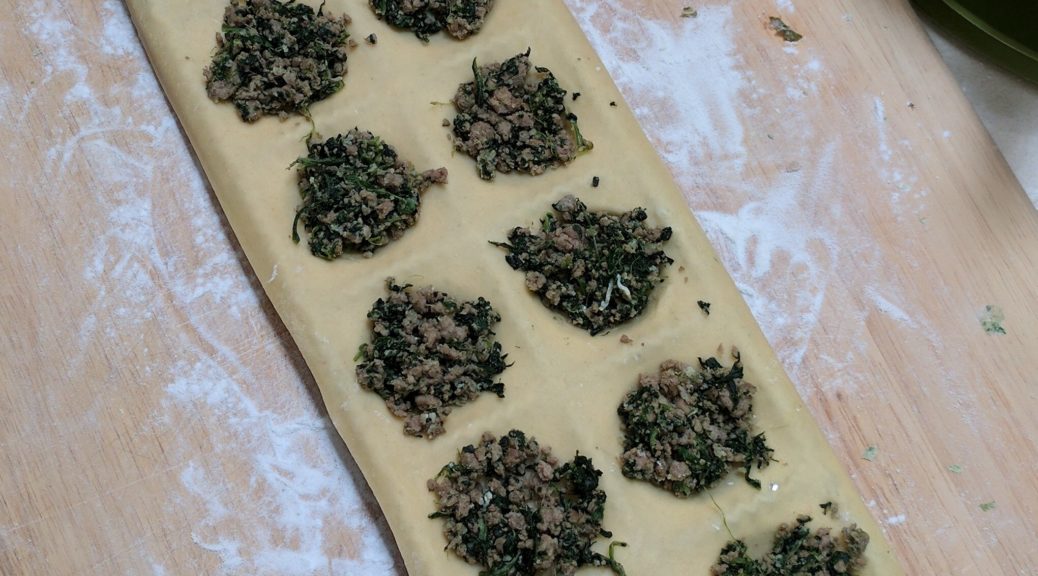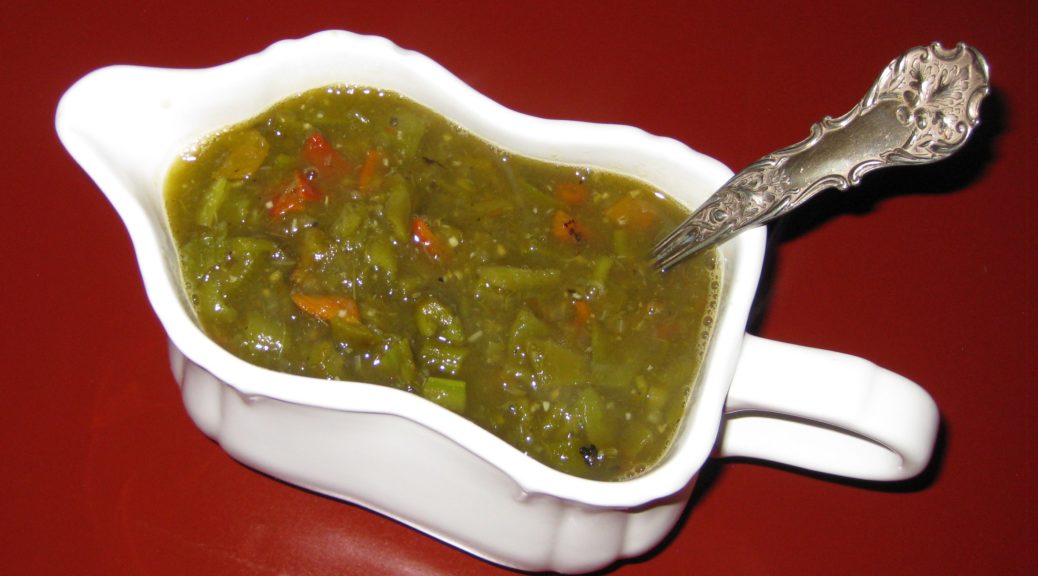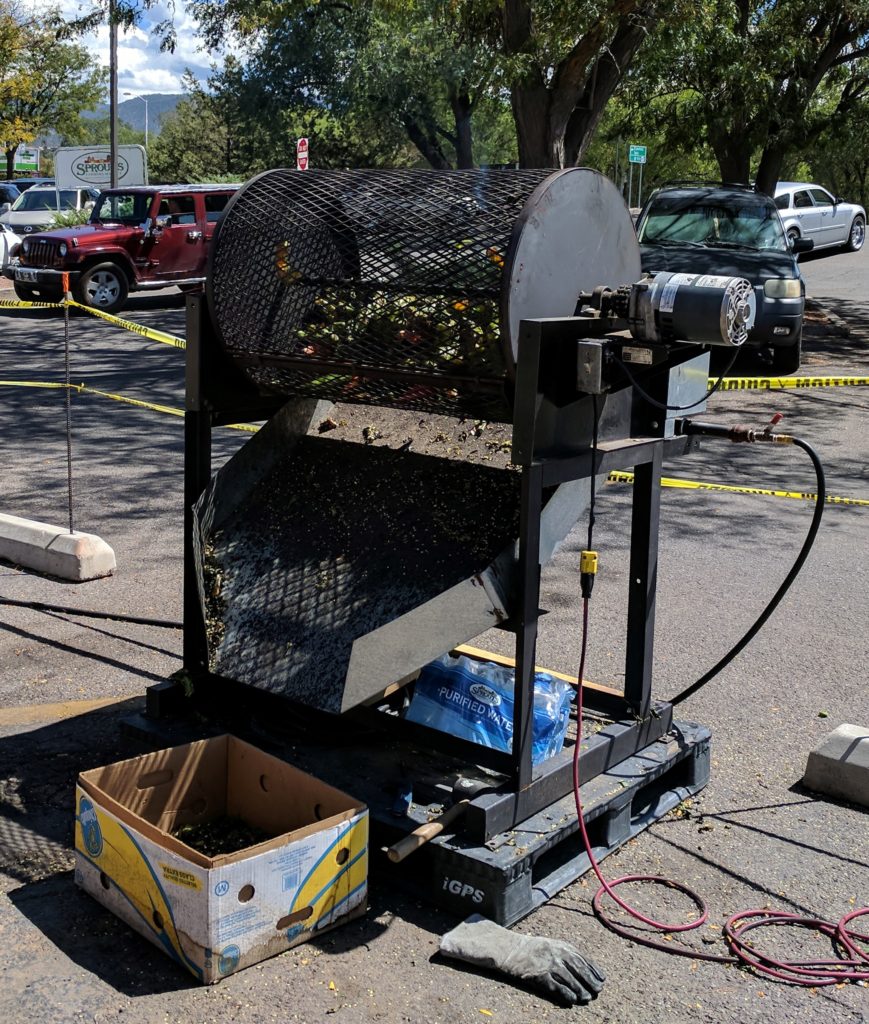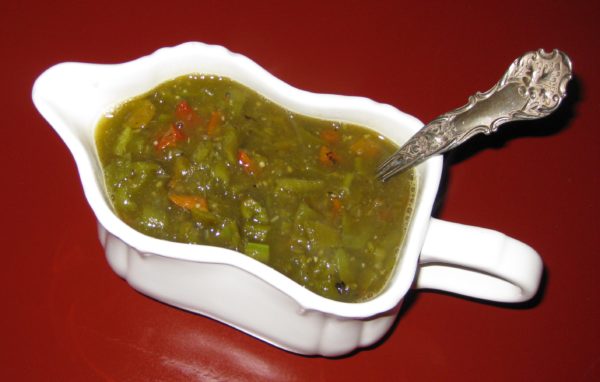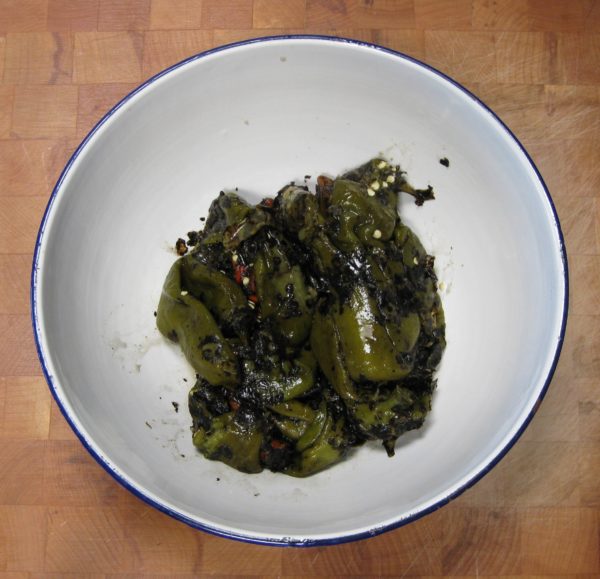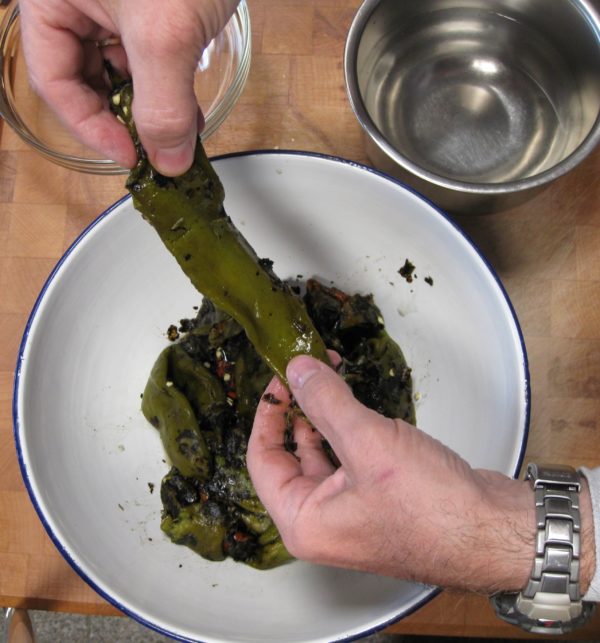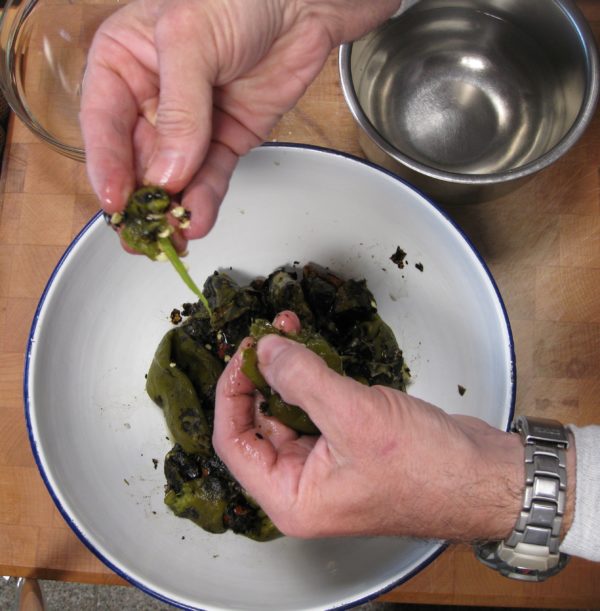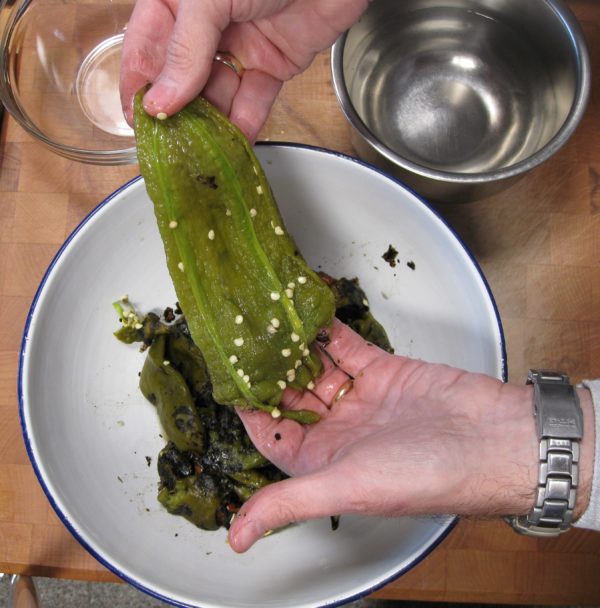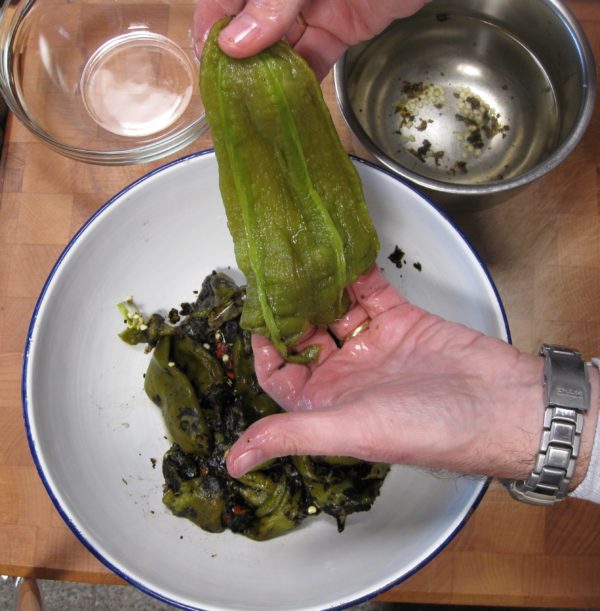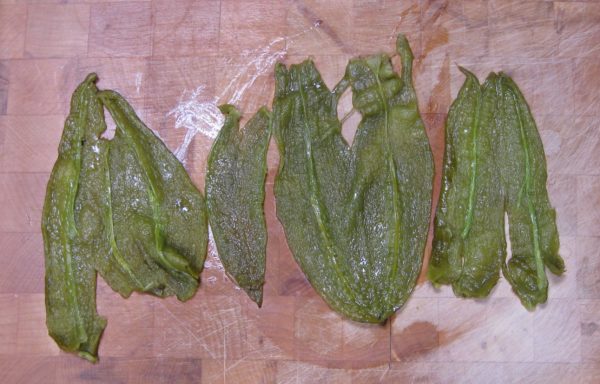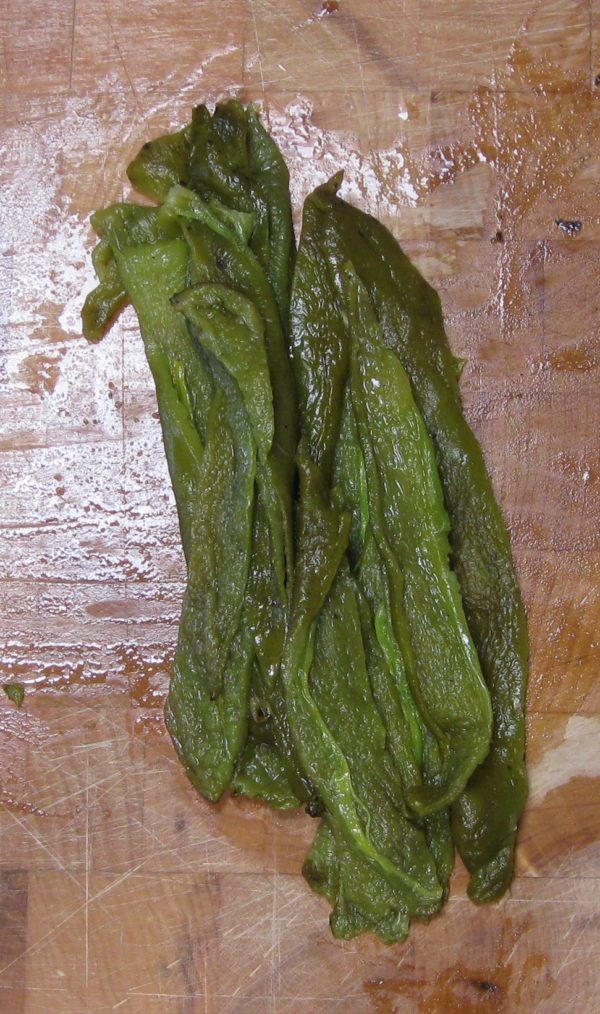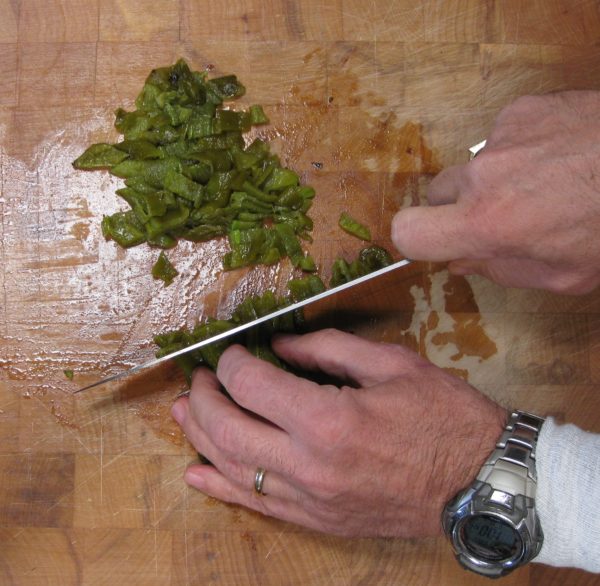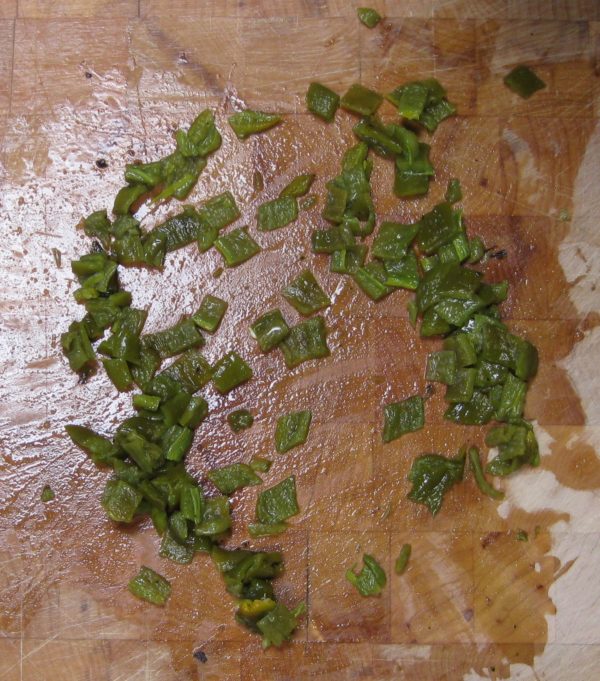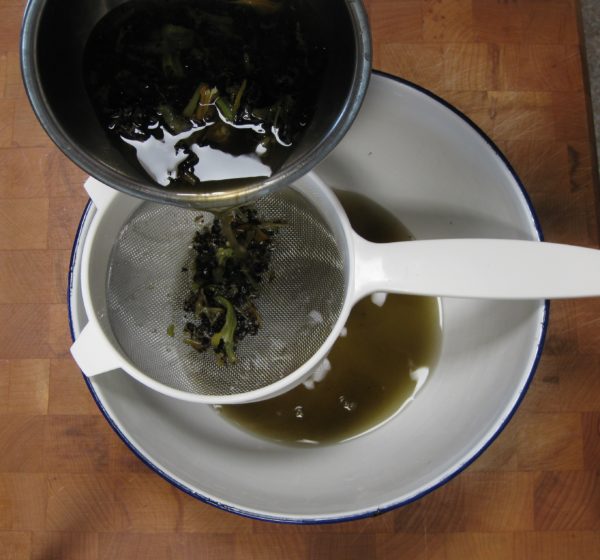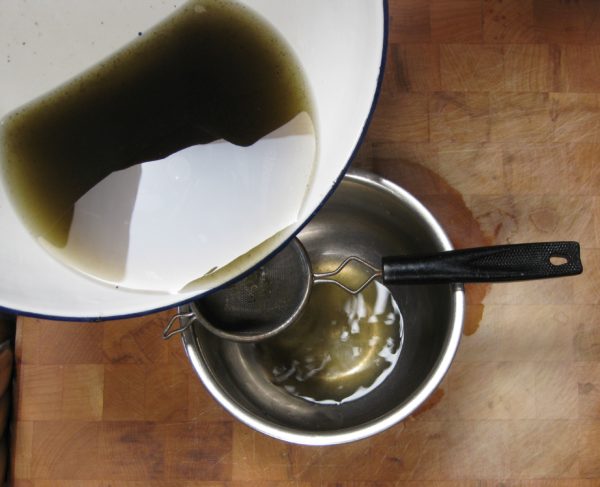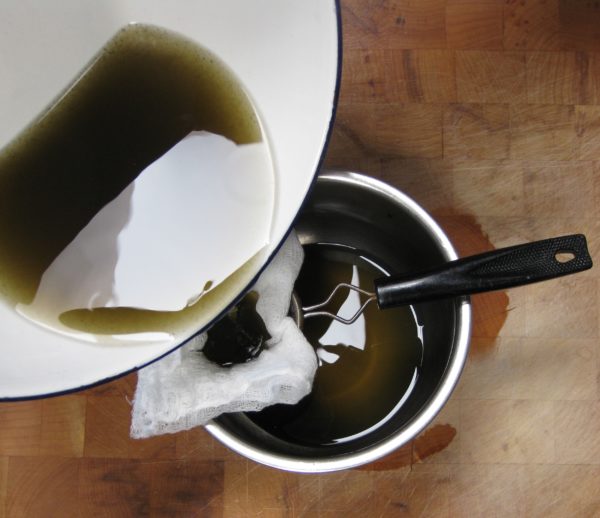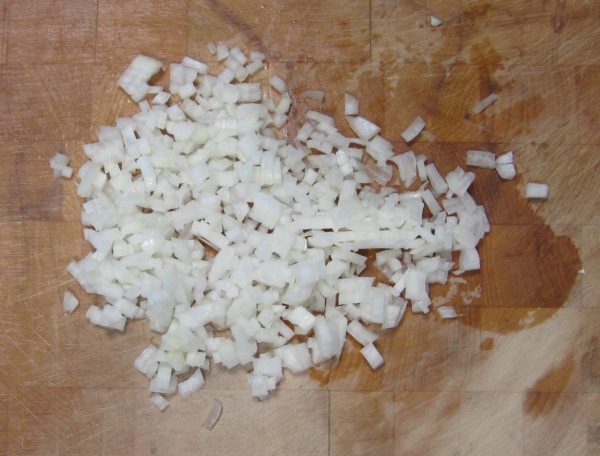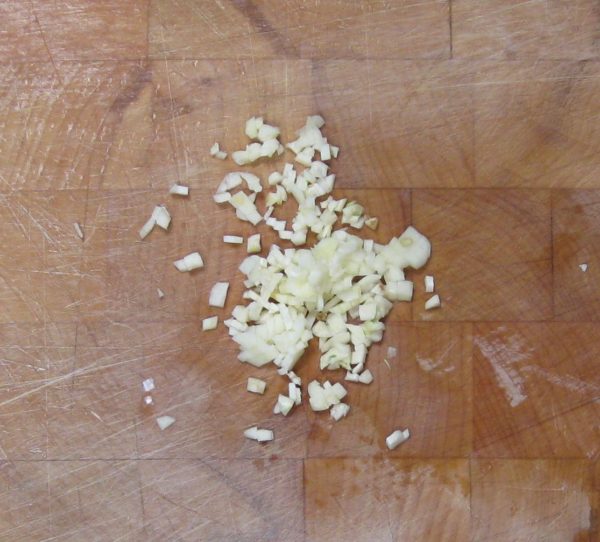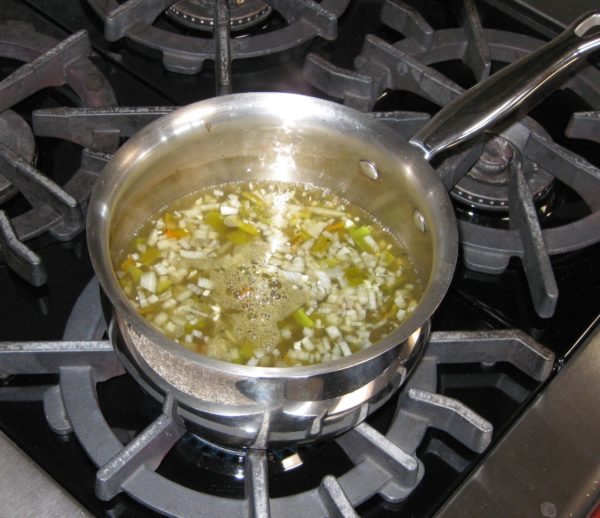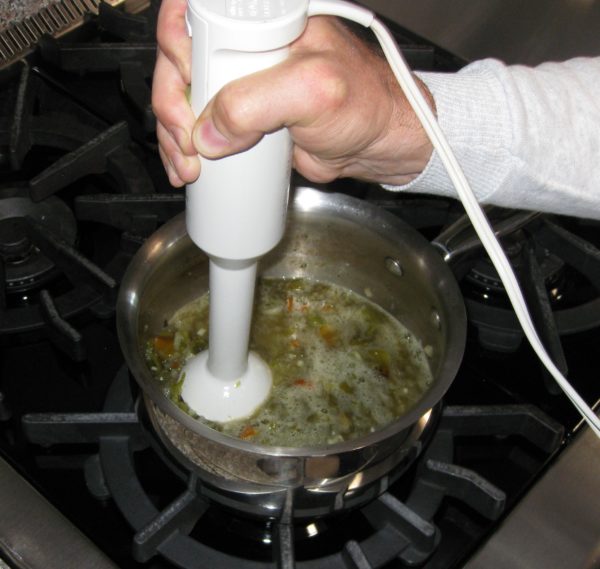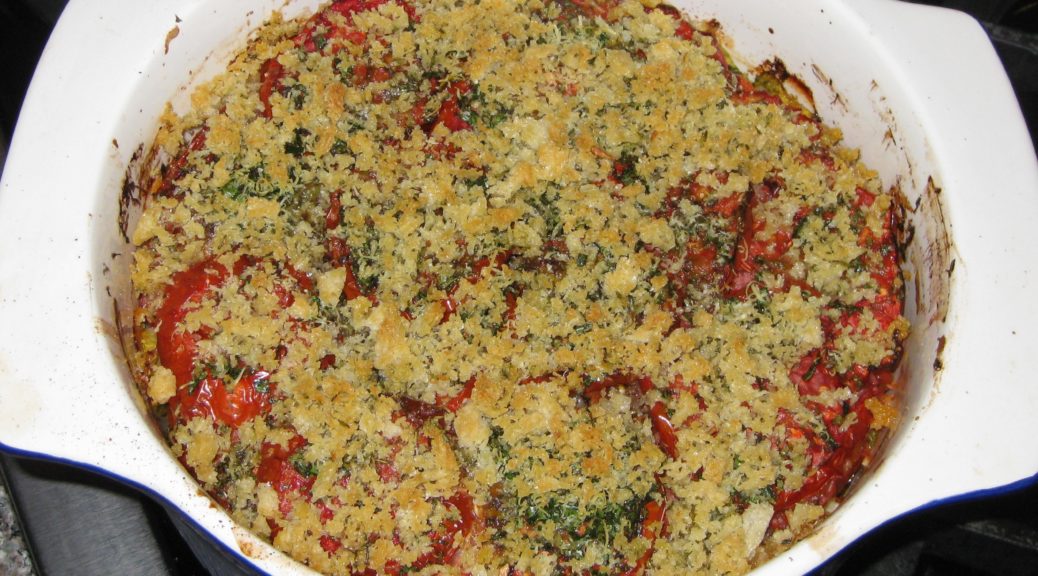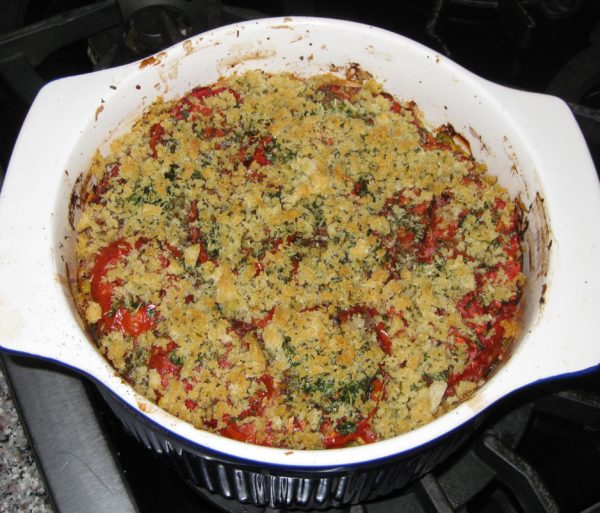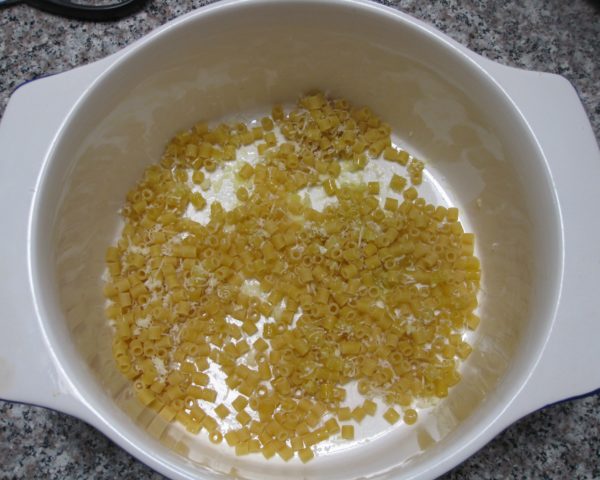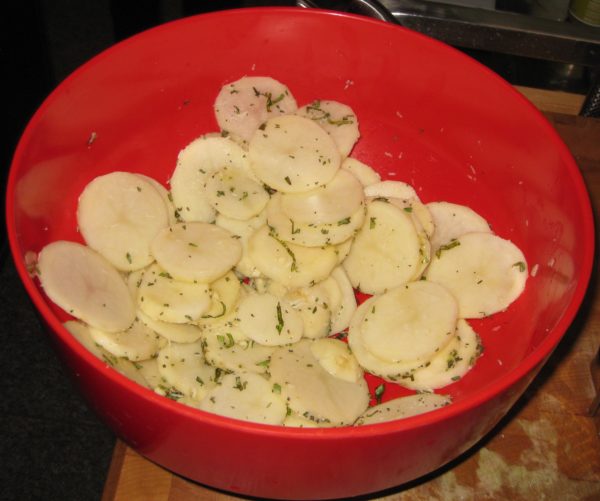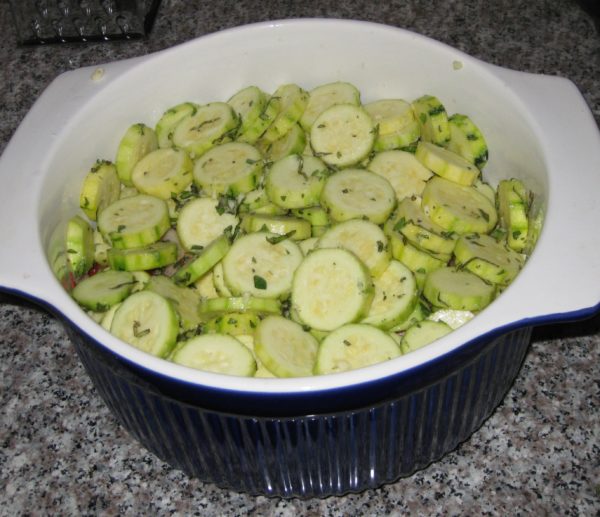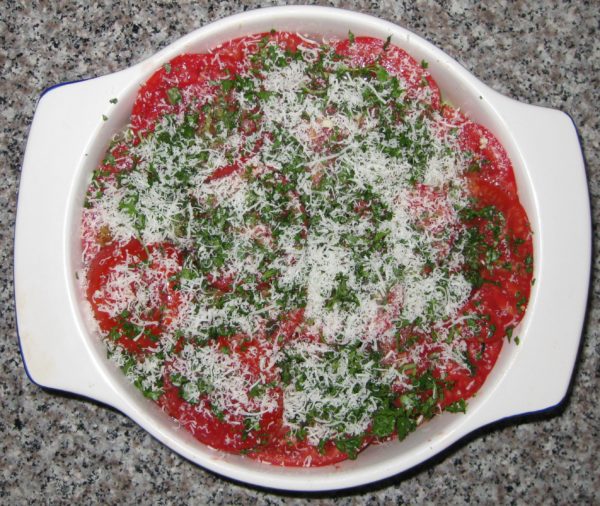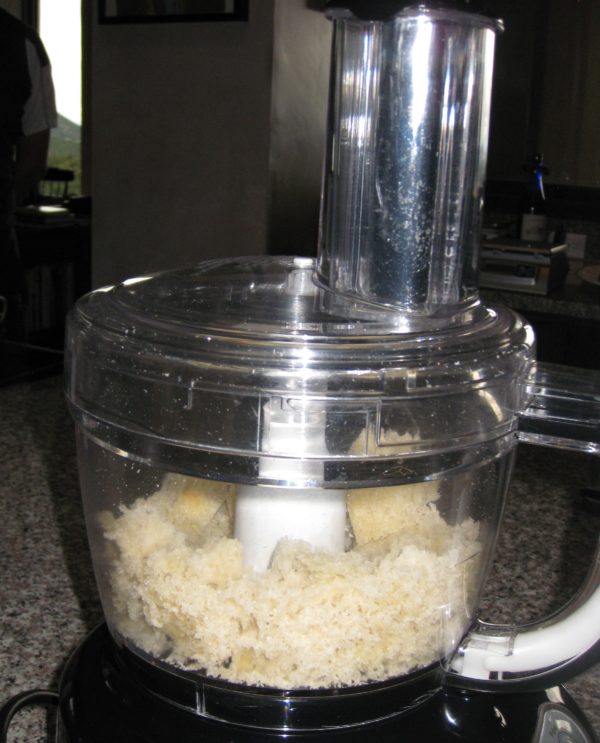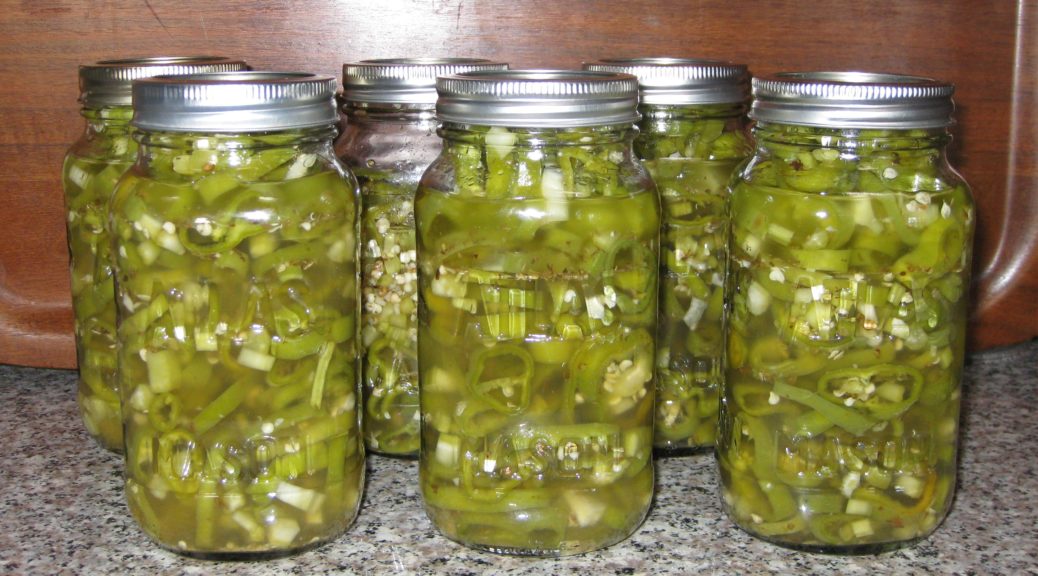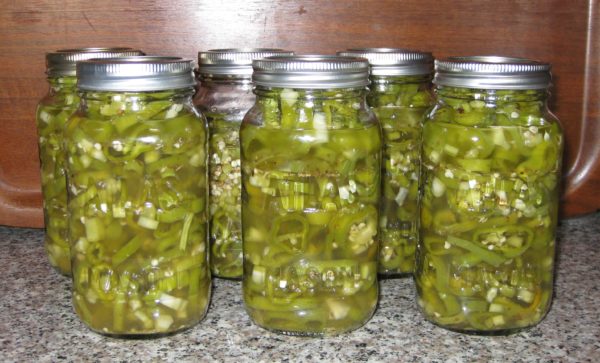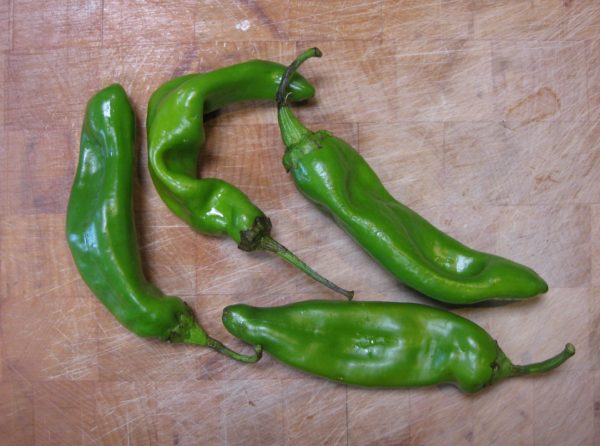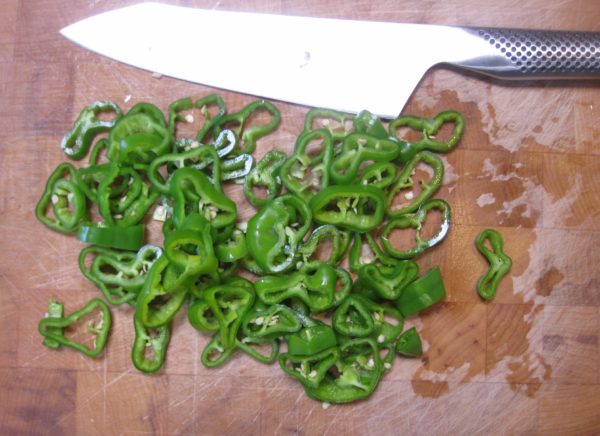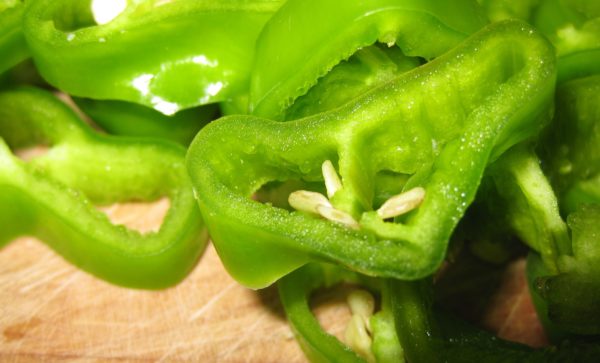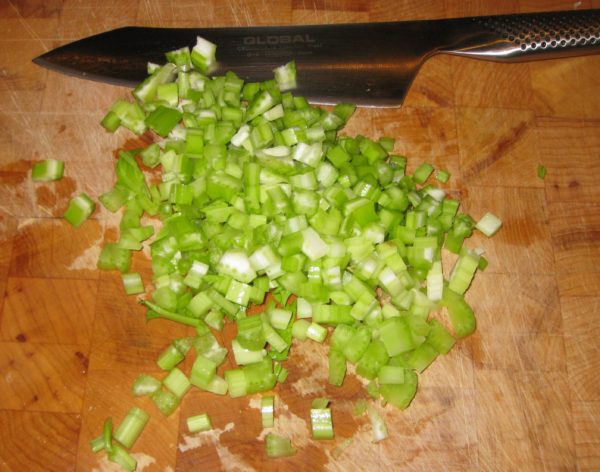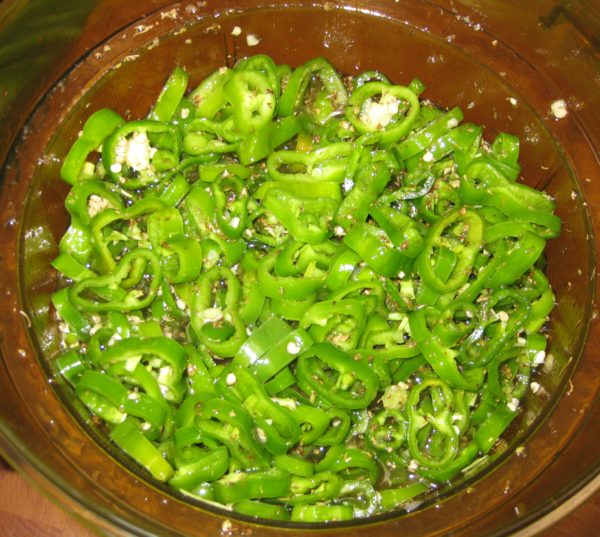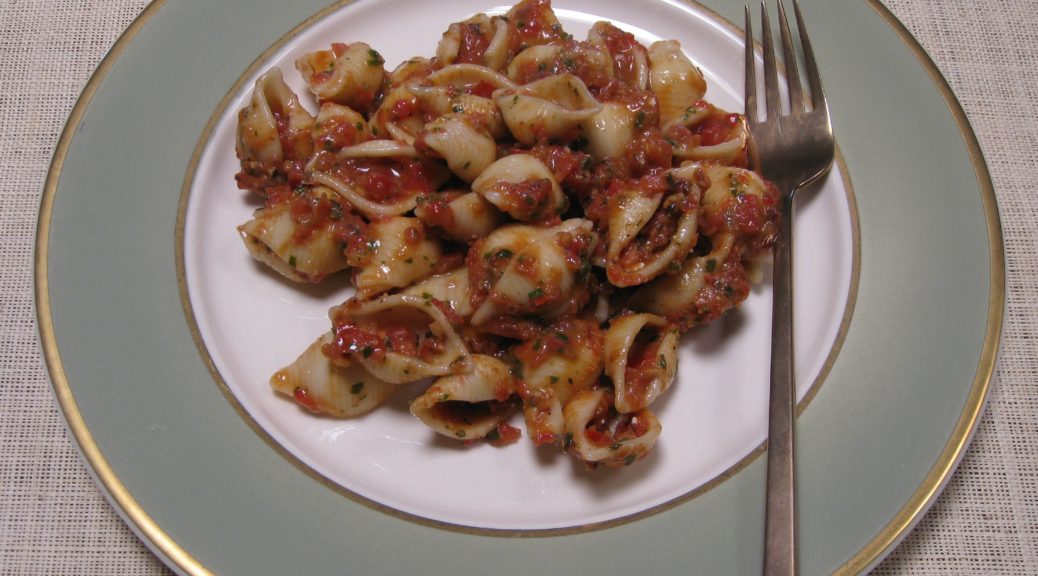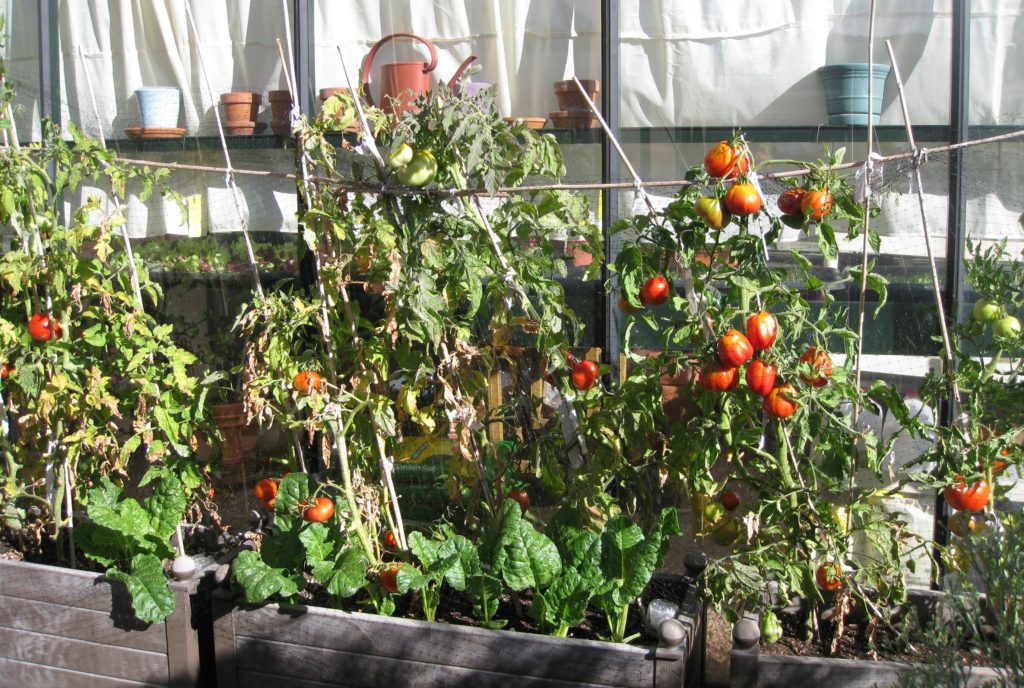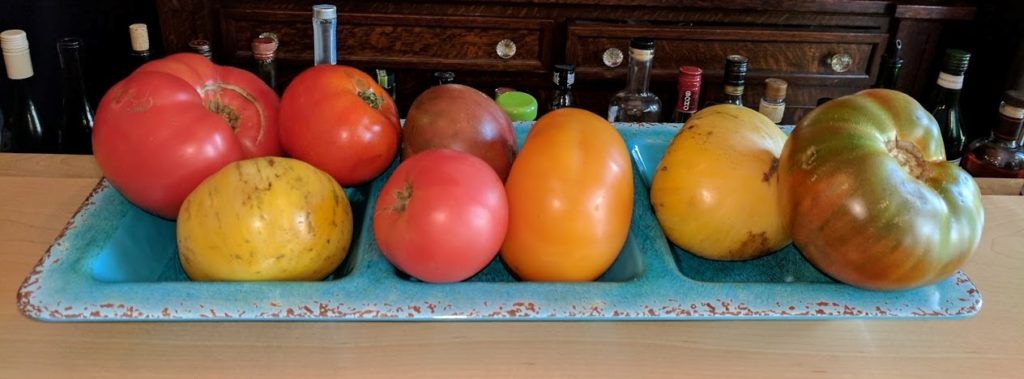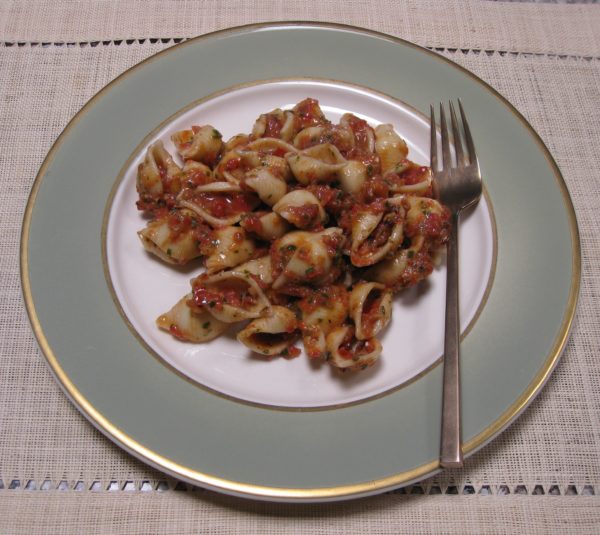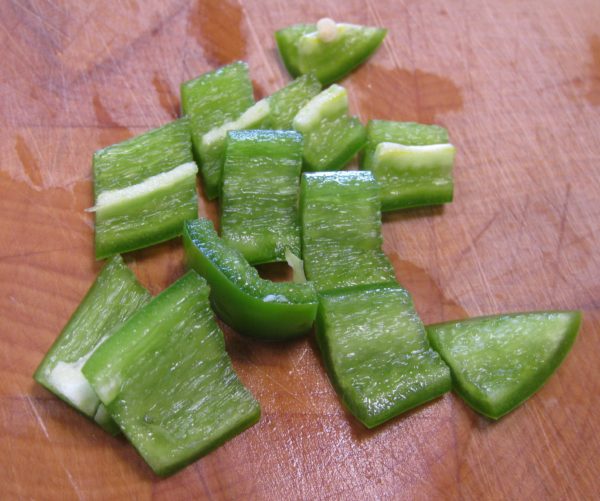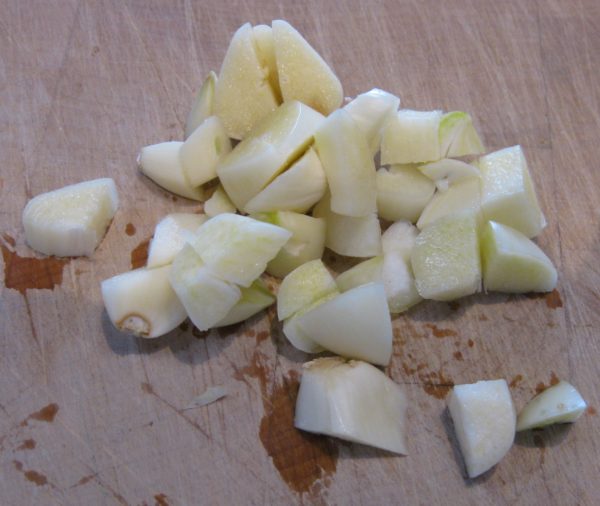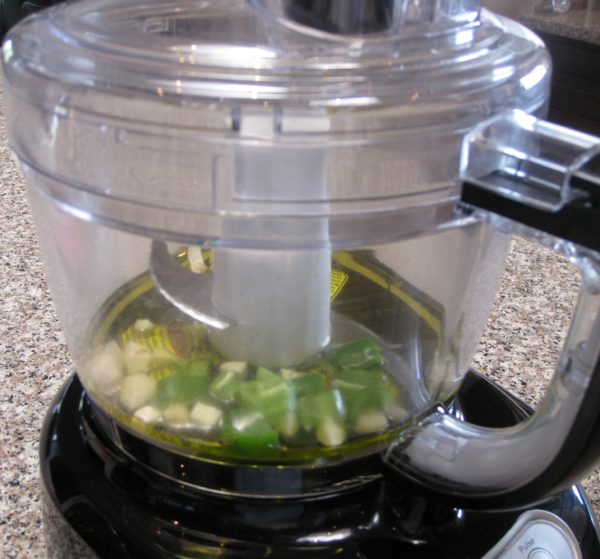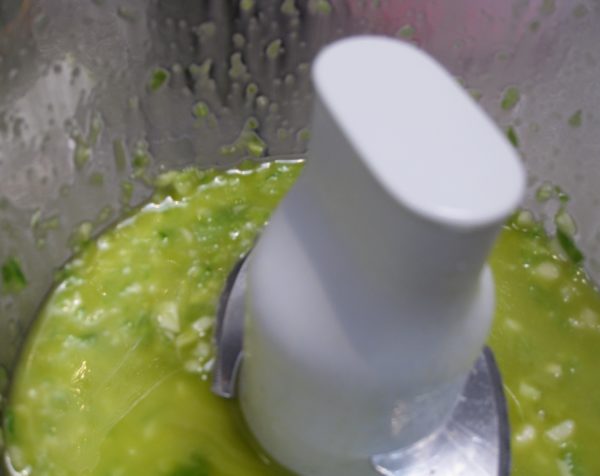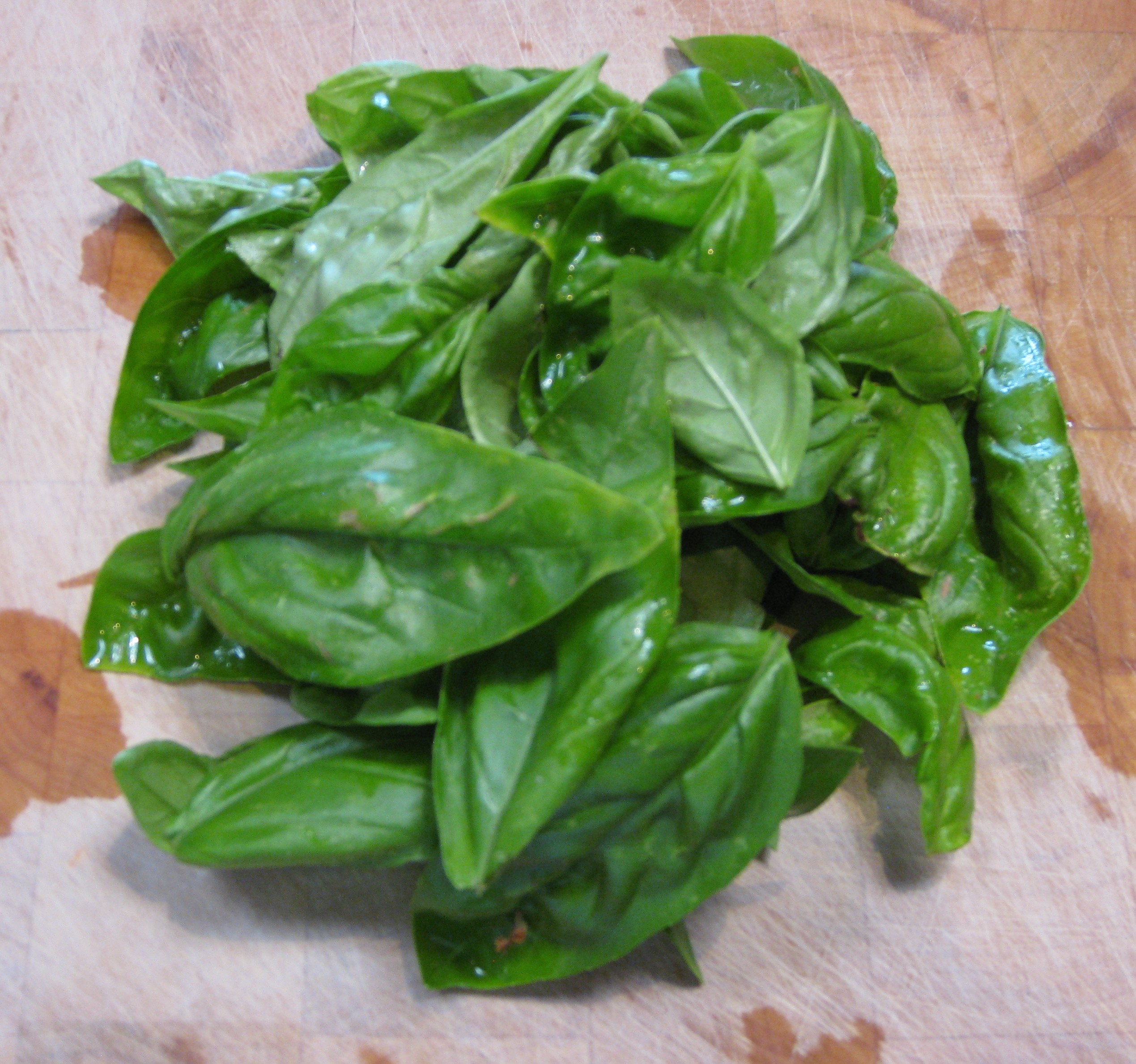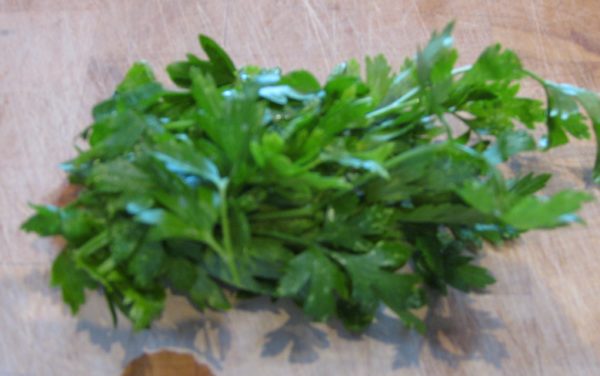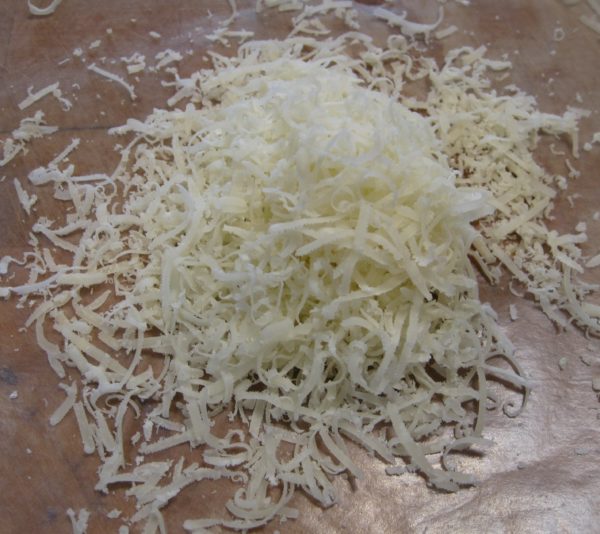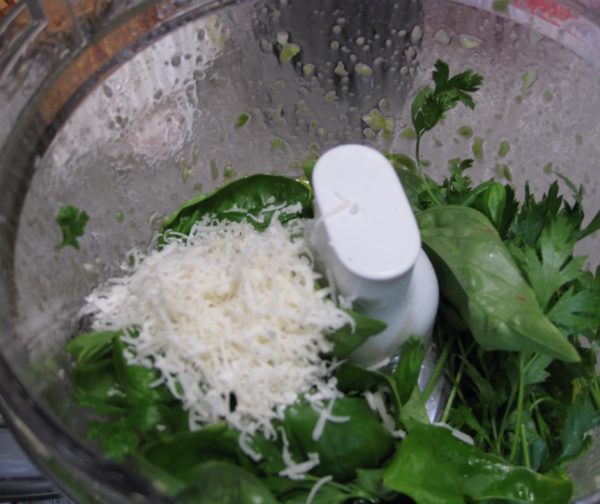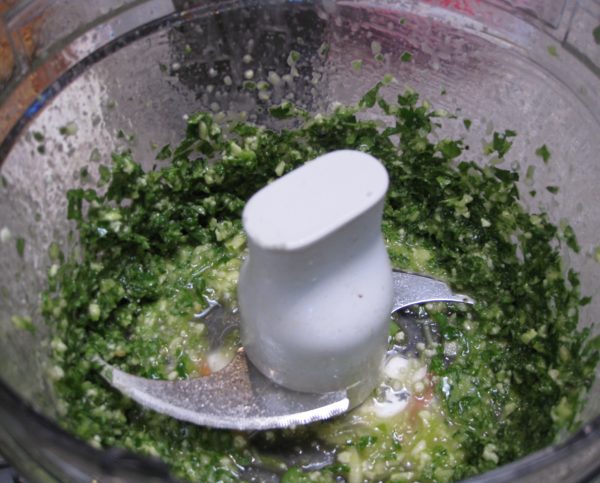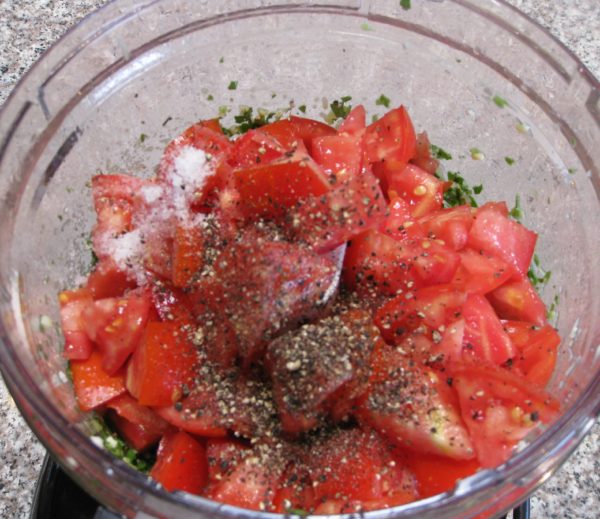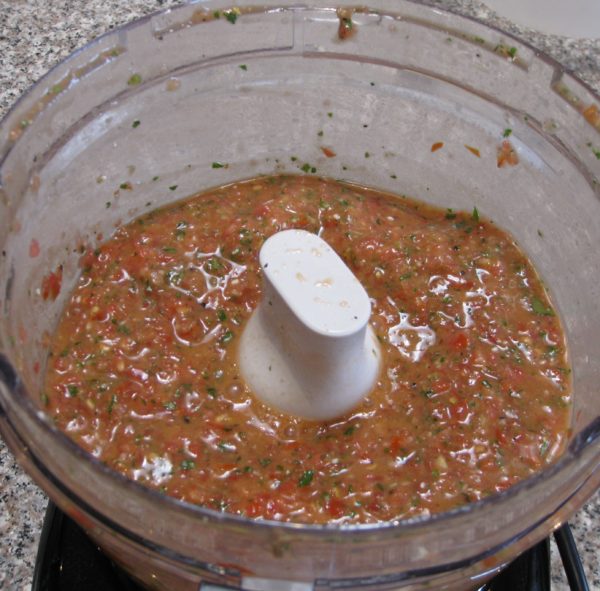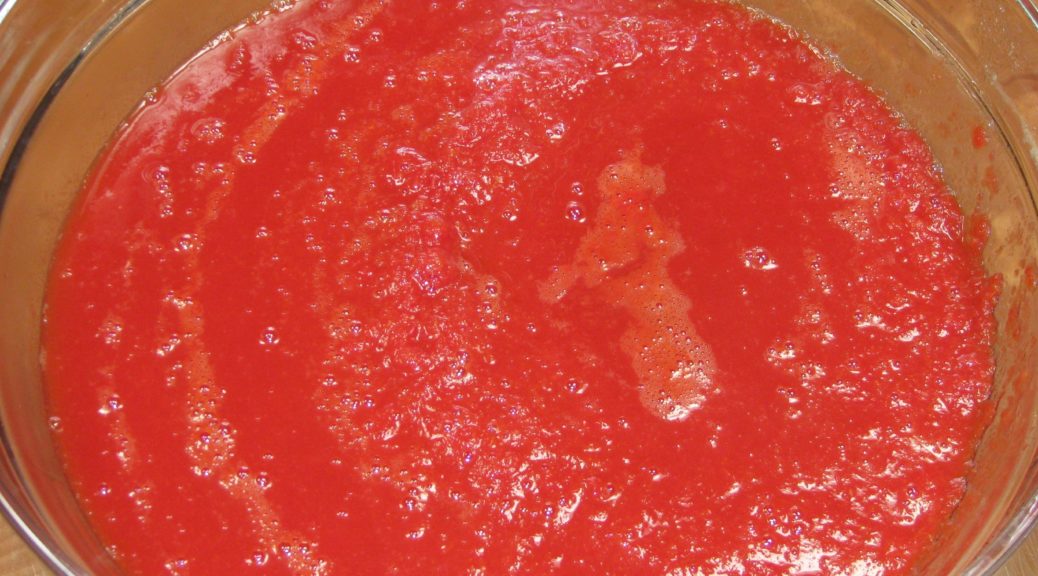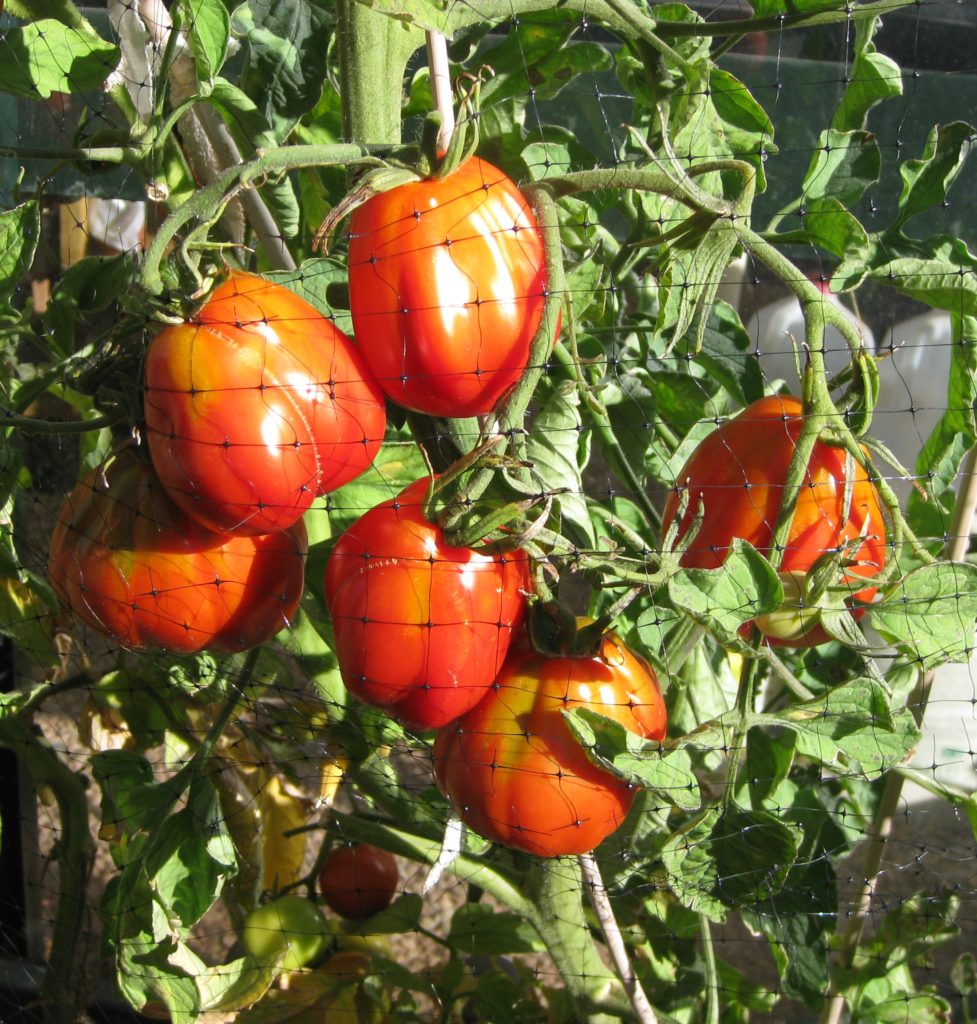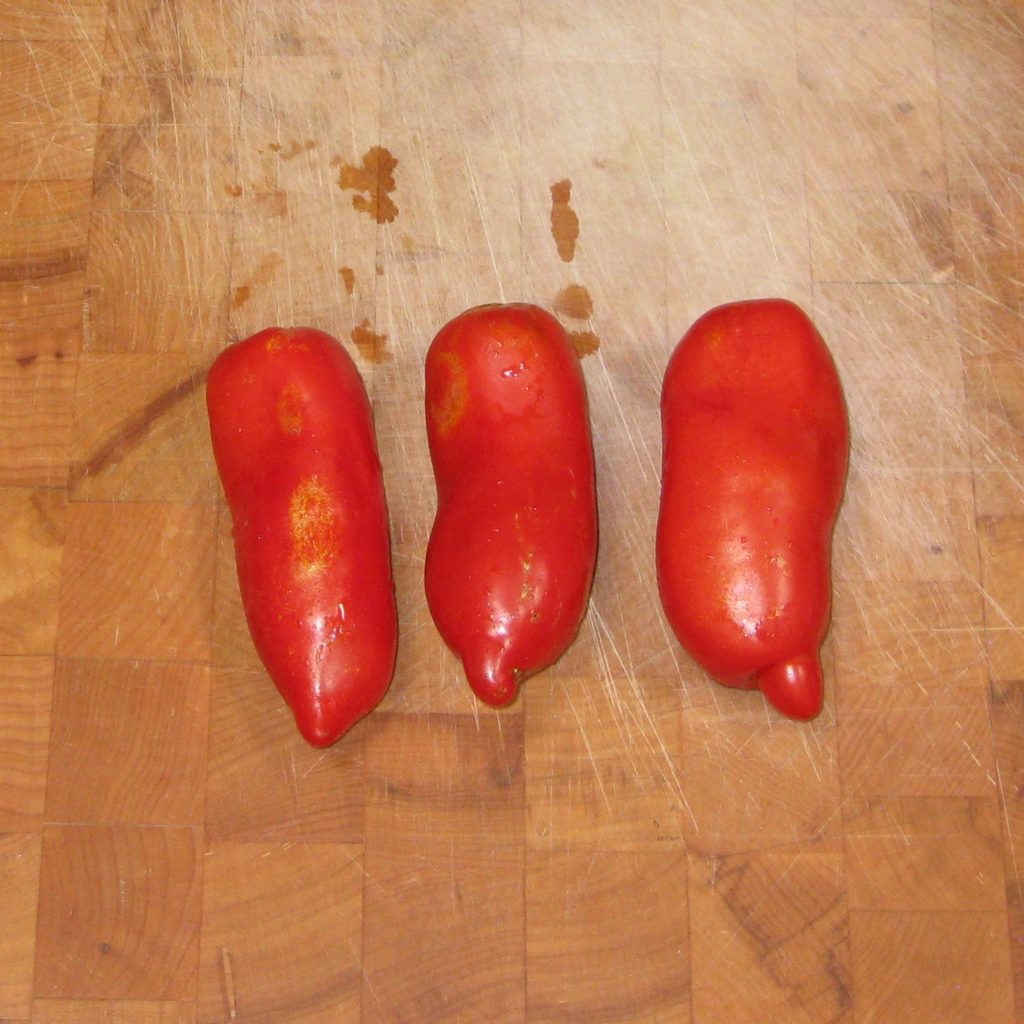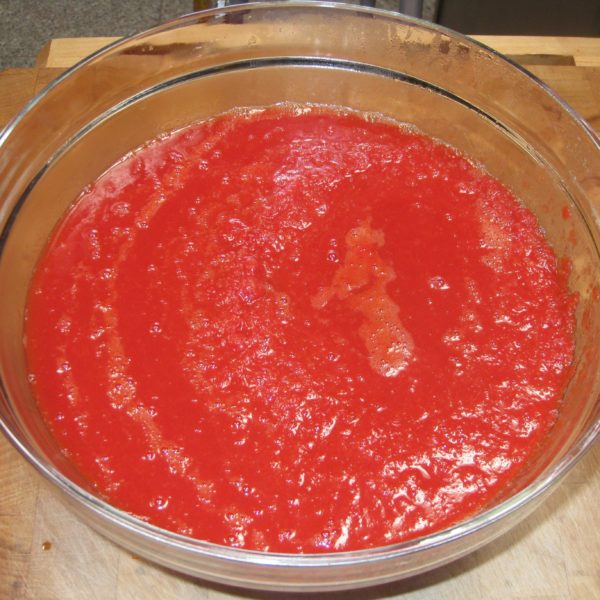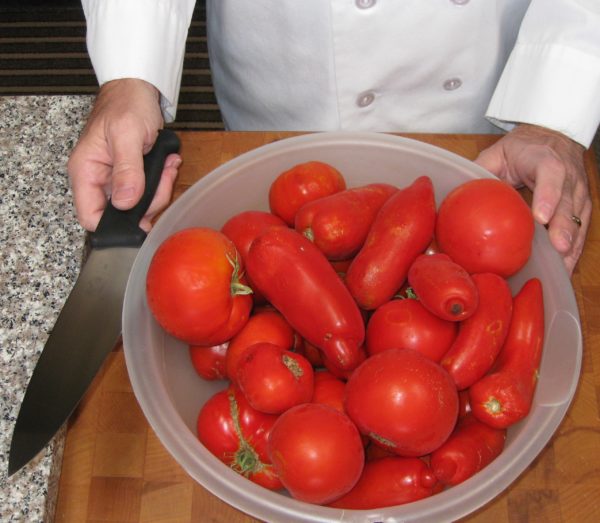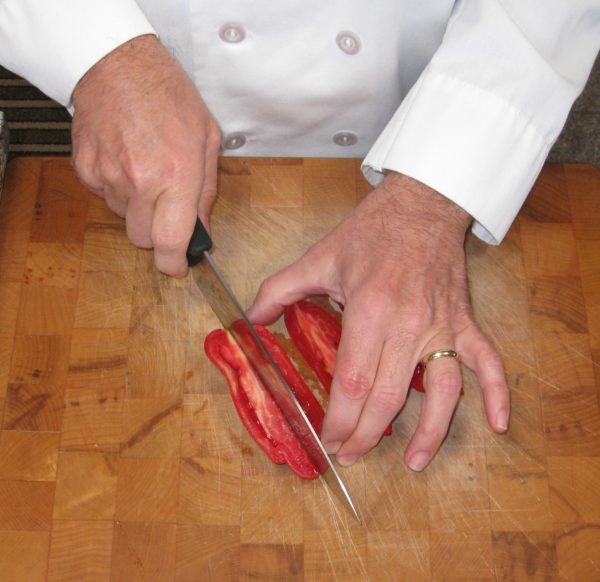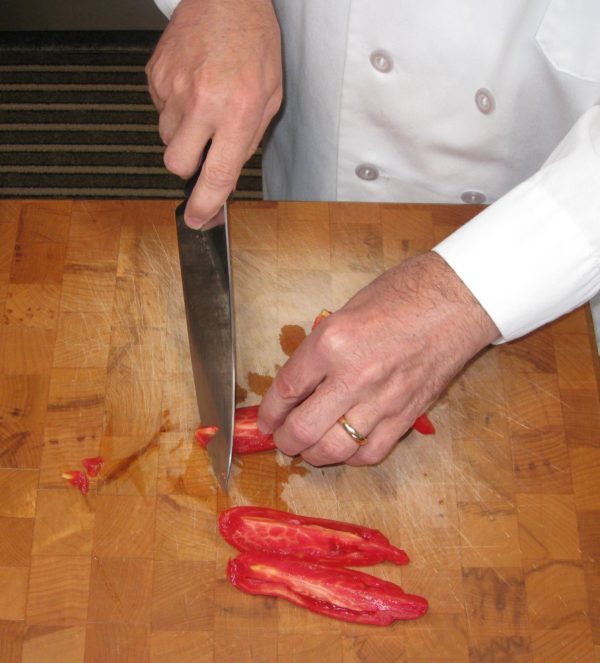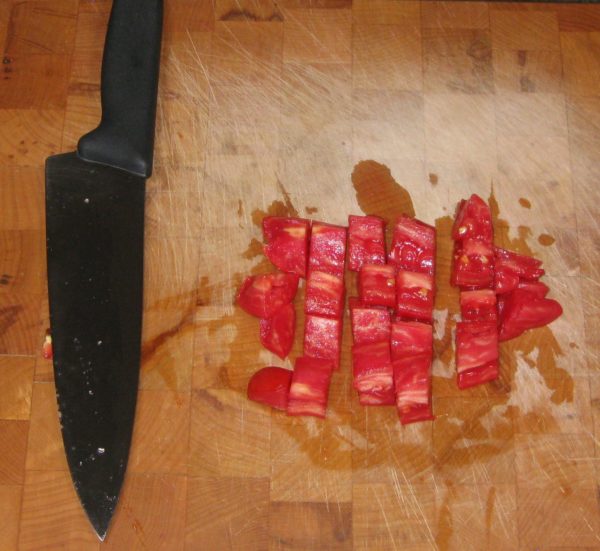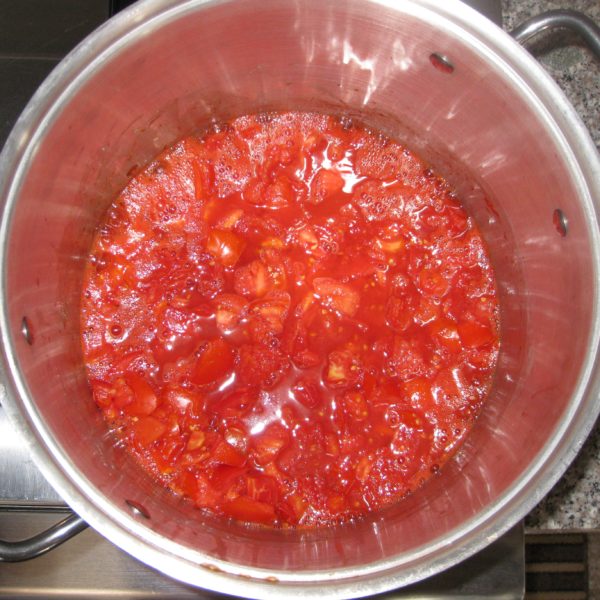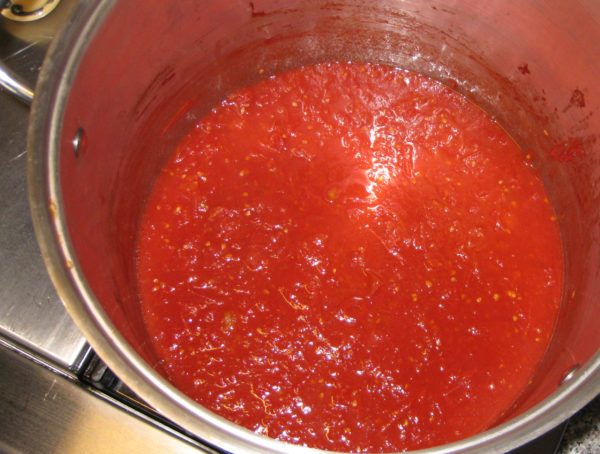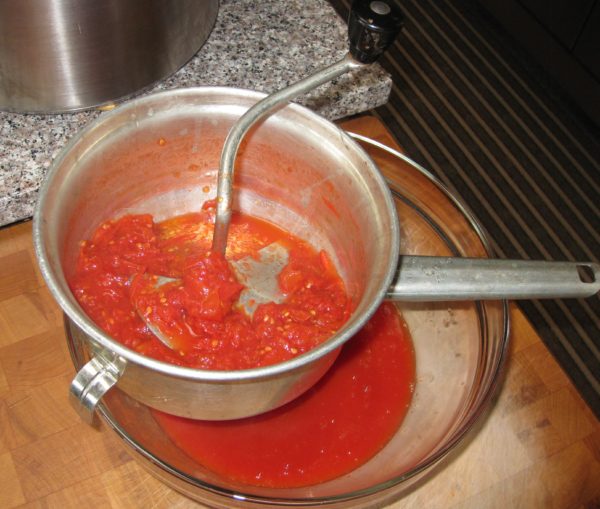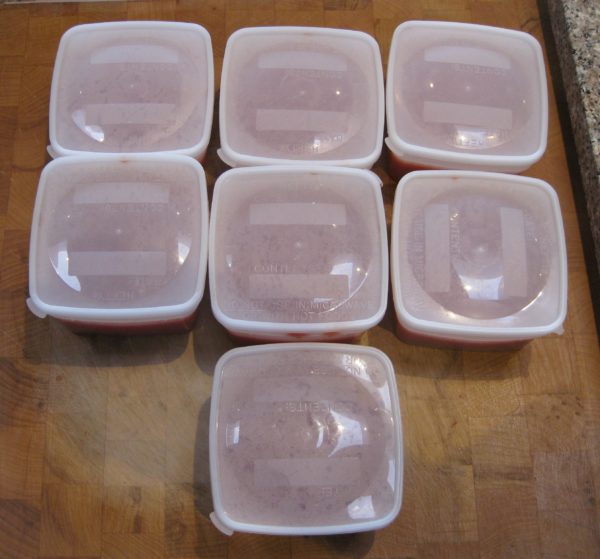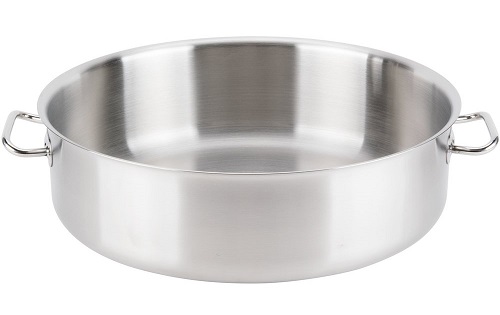September 27, 2017
My strongest olfactory memory of childhood is gradually waking up on Sunday morning to the smell (perfume is a better characterization as far as I’m concerned) of garlic being sautéed in olive oil.
That was how most Sundays started.
My mother would get up early and start making her long-simmered Southern Italian Tomato Sauce (referred to as Ragu or Sugo if one’s Italian roots were close, “Gravy” if one grew up in New York or nearby, and often just “Sauce”). We unceremoniously called it “Spaghetti Sauce” though it was used on much more than spaghetti!
I think the better part of my culinary-cultural history is represented by that sauce. Every Italian family’s sauce is different, even if stylistic similarities can be identified. The sauces made by my mother and her two sisters that I knew, Aunt Margie and Aunt Mamie, were clearly related but also different. Each was good but it’s not as if they didn’t deviate from my Grandmother’s recipe. They were similar in that garlic and meat were browned in oil; tomato products, water, and seasonings were added; and the whole thing simmered for hours. The meats varied, the tomato products (tomato paste, tomato puree, whole canned tomatoes, etc.) and the proportions of them definitely varied as did the seasonings and other aromatics.
My mother’s “Spaghetti Sauce” to call it by its “historic” name, a name that I no longer use, is, without doubt, my most precious culinary treasure. I have only ever given the recipe out twice. In the 1970’s I gave it to John Bowker and his wife Margaret Roper Bowker. John was the dean of Trinity College in Cambridge, England. Recently I gave it to Robert Reddington and John O’Malley in Palm Springs after Bob lamented the loss of the recipe for the long-simmered tomato sauce he learned to make while living in Chicago.
With my mother’s sauce as the near-constant backdrop to our Sunday dinners, the rest of the meal varied. The sauce could be served with spaghetti or some other cut of dry pasta, or with my mother’s home-made fettuccine, or with ravioli. Although my favorite pasta is gnocchi, we never had those on Sundays as my father didn’t like them. Gnocchi (always home-made) were reserved for a weeknight meal during the times that my father worked out of town.
The sauce has an abundant amount of meat in it, pork, always cut in big pieces, never ground or chopped. Nonetheless, the pasta was often accompanied by my mother’s slow-cooked roast pork or maybe a roast chicken.
It seems incongruous now, but in the 1960s, before the widespread use of antibiotics, chickens were expensive! (I’m not in favor of the prophylactic use of antibiotics but I’m just saying that’s why chickens are relatively inexpensive now.) I still have a handful of my mother’s “City Chicken” sticks from the 1960s. They are round, pointed sticks slimmer than a pencil but thicker than bamboo skewers. Pieces of pork and veal would be skewered in alternating fashion on the sticks, breaded, and fried like chicken drumsticks. This was less expensive than chicken!!
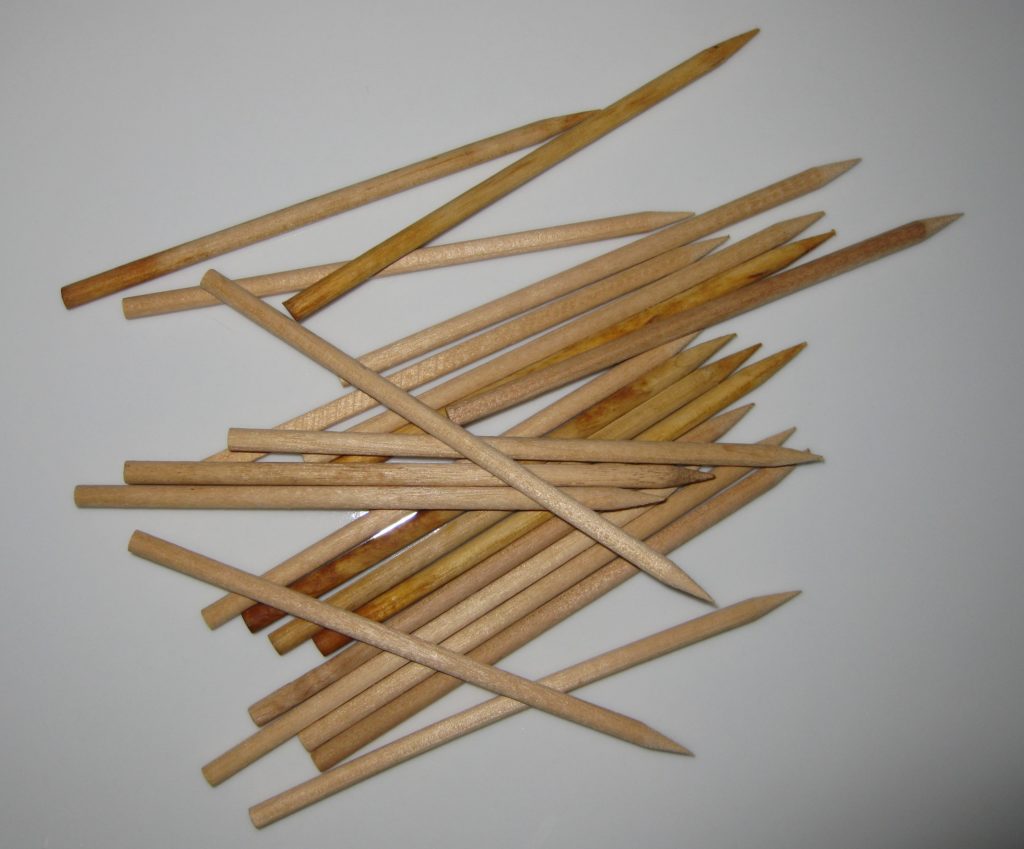
But back to Sundays…
Sometimes, after the sauce was bubbling away, my mother would make ravioli. Next to gnocchi, they are my favorite pasta, but manicotti and lasagna aren’t far behind.
We would eat our big meal around 1 PM on Sunday and my mother would get all of this done in time for that meal, including taking time to go to church, during which my Aunt Mamie, who lived upstairs, would be tasked with stirring the “Spaghetti Sauce.”
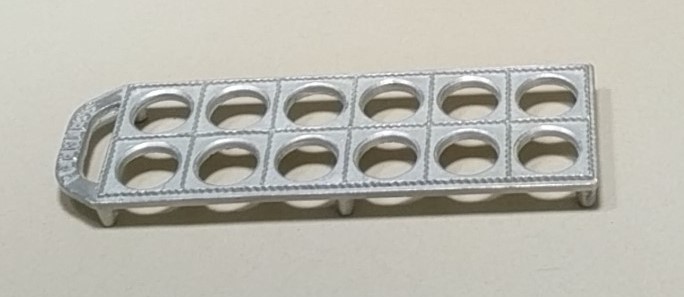
Making ravioli in a group is a lot more fun. I also find that making the ravioli on a different day from the day they are cooked and eaten means that I am not as tired and I enjoy them more. The pictures in this post are from a Sunday when I got together with Rich DePippo, Susan Vinci-Lucero, and my in-laws, Marisa and Frank Pieri, to make ravioli. I think we made about 30 dozen ravioli!
Follow us
Click HERE to join our mailing list and you’ll never miss a recipe again!
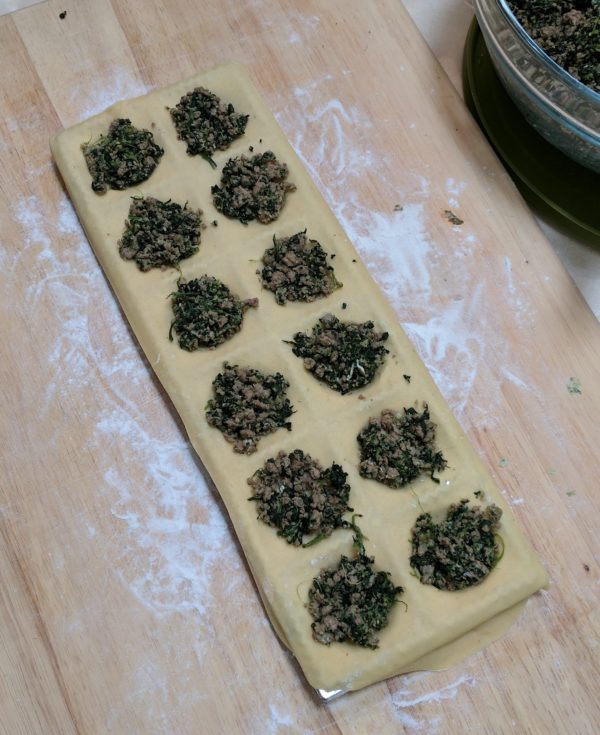
| Prep Time | 2 hours |
| Passive Time | 30 minutes |
| Servings |
people
|
- 10 ounces frozen chopped spinach
- 1 pound ground beef 93% lean
- 2 tablespoons olive oil
- 1 clove garlic minced
- 1 egg lightly beaten
- 1/3 cup fine dry breadcrumbs additional if needed
- salt to taste
- black pepper freshly ground to taste
- 4 cups all purpose flour
- 1 egg
- 3 egg whites
- 1 cup water scant
Ingredients
Filling
Dough
|

|
- Put the frozen spinach in a small saucepan. Add a few tablespoons of water. Cover and cook, stirring occasionally, until the spinach is completely thawed.
- Pour the spinach into a large sieve.
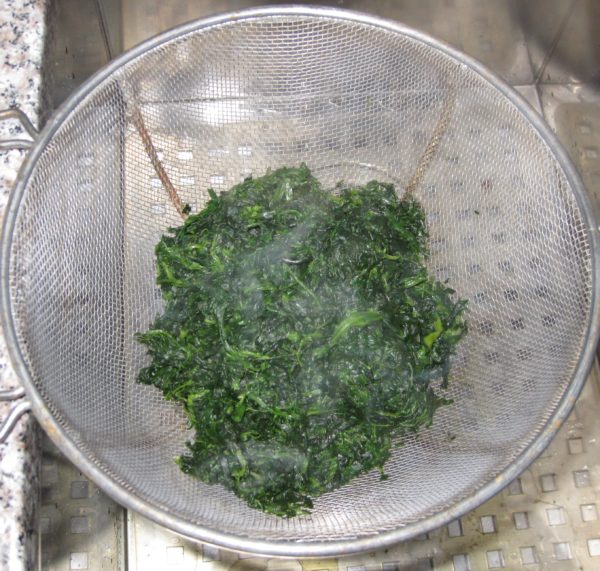
- After the spinach has cooled enough to handle, squeeze handfuls of the spinach to remove as much liquid as possible.
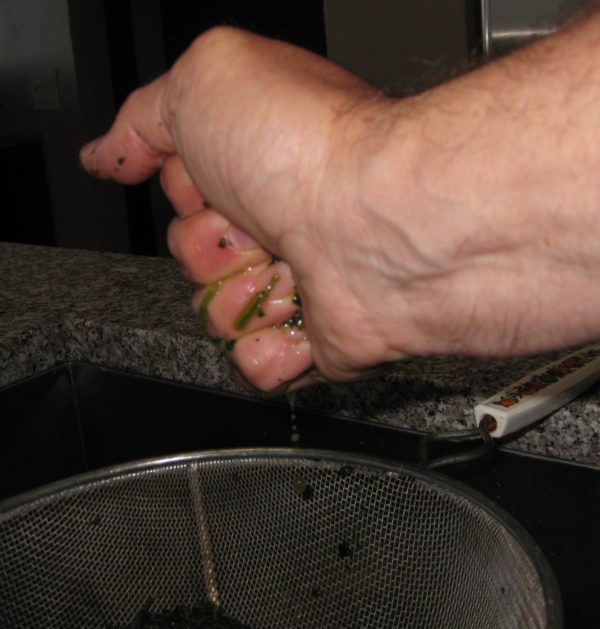
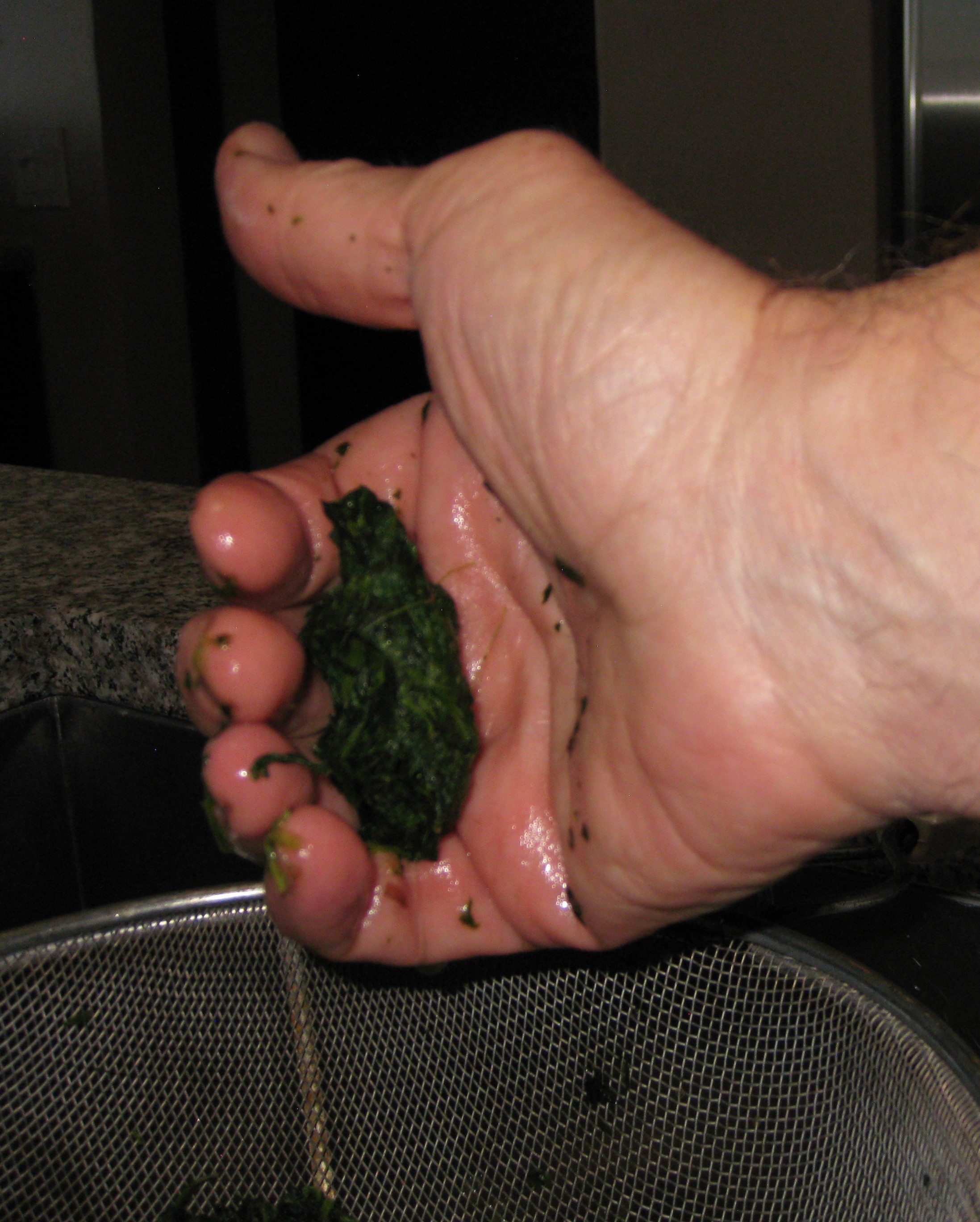
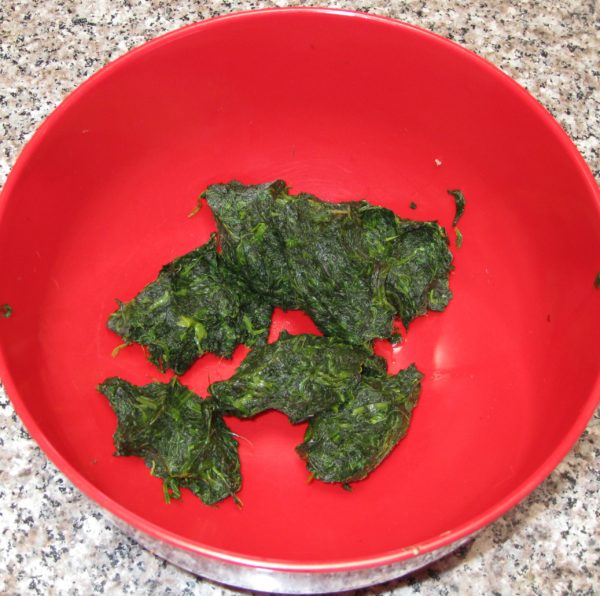
- Heat the olive oil in a 12-inch sauté pan until shimmering. Add the beef.
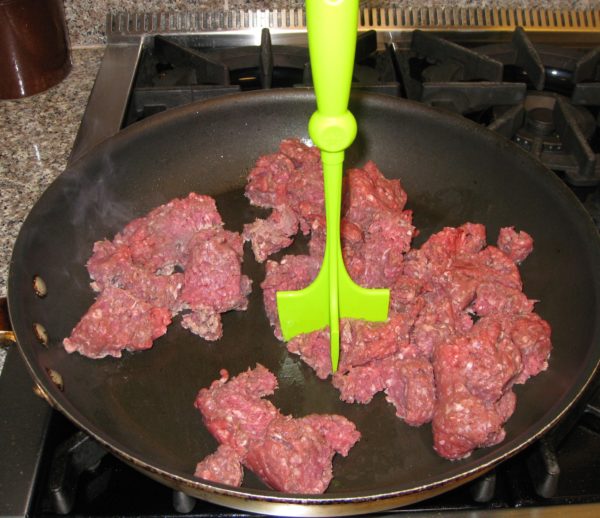
- Cook over high heat until the liquid has evaporated, breaking up the meat while cooking.
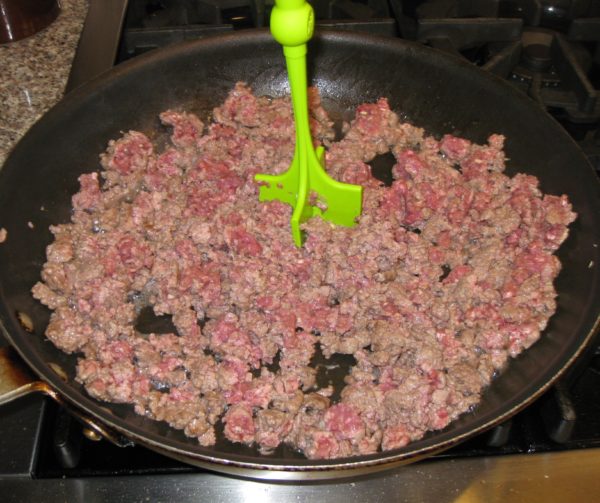
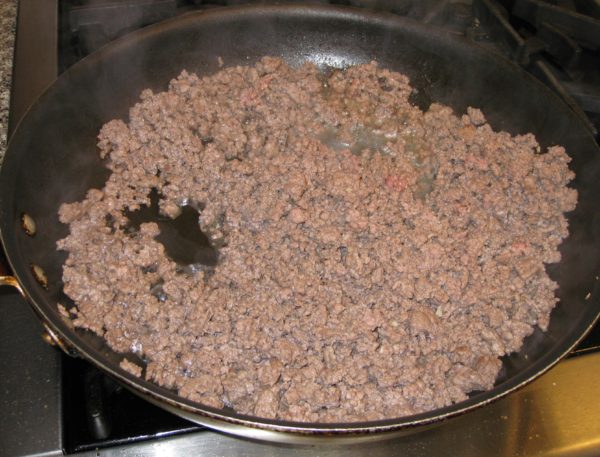
- Reduce the heat to medium and add the garlic, 1 teaspoon of salt, and black pepper to taste. Continue to sauté for 2-3 minutes more.
- Add the spinach to the beef.
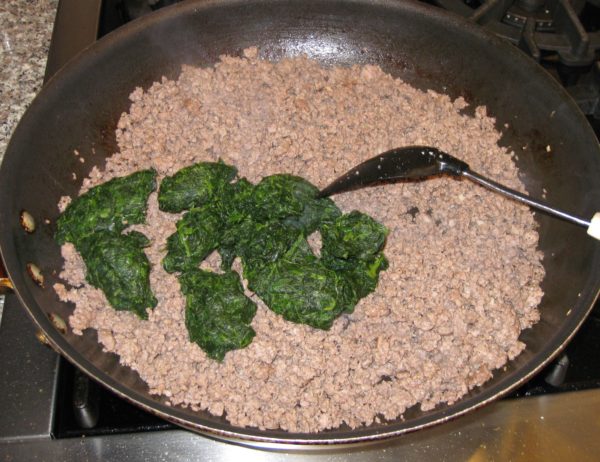
- Continue to cook over medium to medium-low heat while breaking up the spinach and completely combining it with the beef.
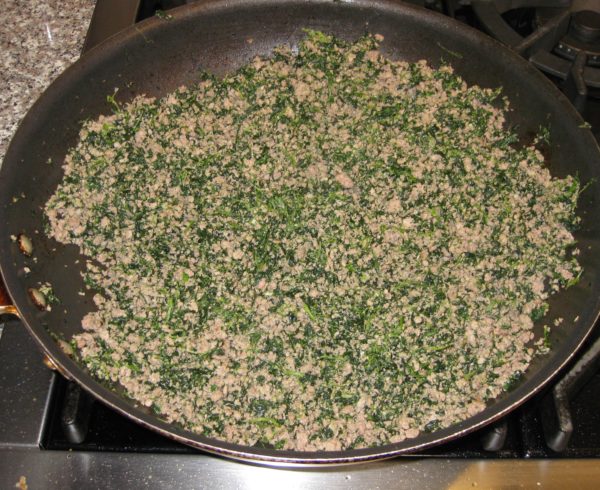
- When the beef and spinach are well combined and no obvious liquid remains in the pan, add the beaten egg. Stir well and cook two minutes more. The egg should completely incorporate into the filling and no longer be visible.
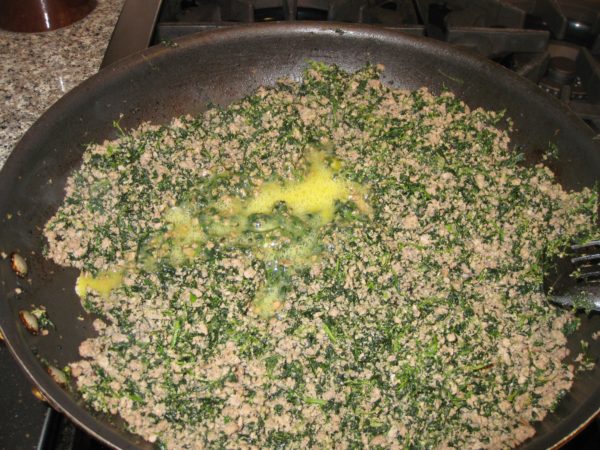
- Adjust salt and pepper.
- On low heat, add 1/4-1/3 cup of breadcrumbs and combine well to absorb any remaining liquid or oil. If necessary to absorb any remaining liquid, add another tablespoon or two of breadcrumbs. If you cooked off all the liquid when browning the beef, and used lean beef, 1/3 cup of breadcrumbs should be enough.
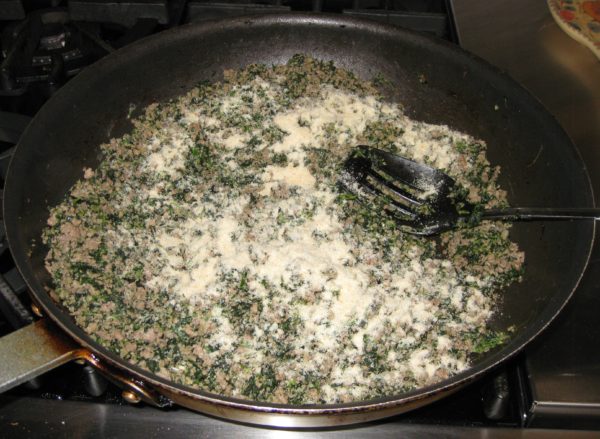
- Cool the filling to room temperature before filling the ravioli.
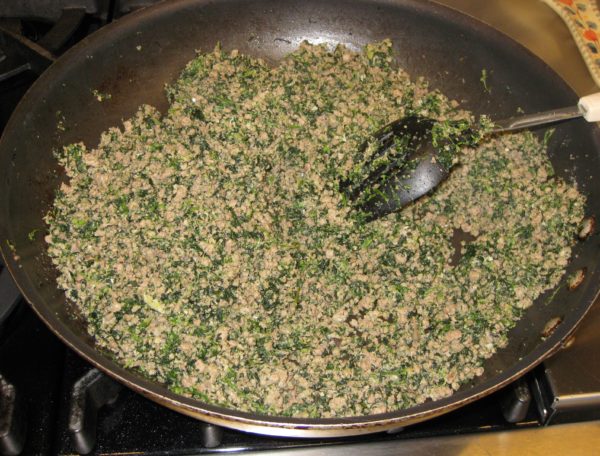
- Put the flour, egg, and egg whites in the bowl of an electric mixer outfitted with a paddle.
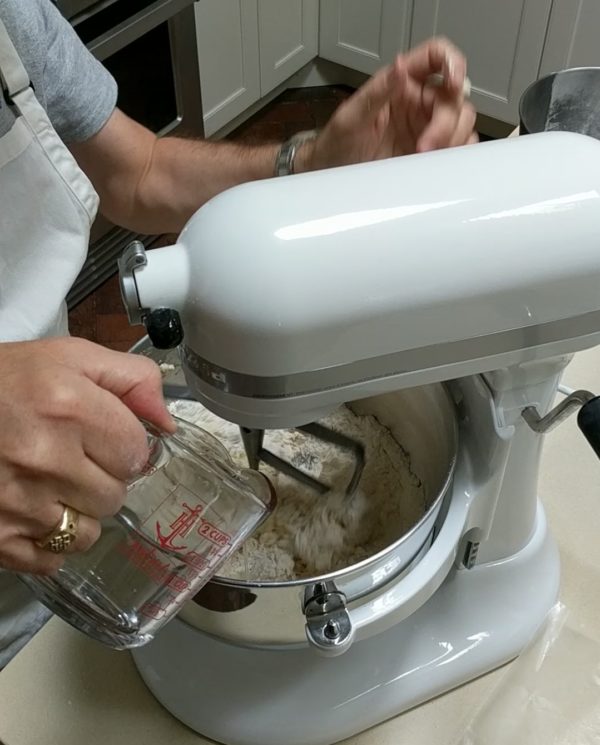
- Mix on low until combined.
- Add the water, a little at a time, until the dough just comes together. The dough should not be the slightest bit tacky. You may not need all the water.
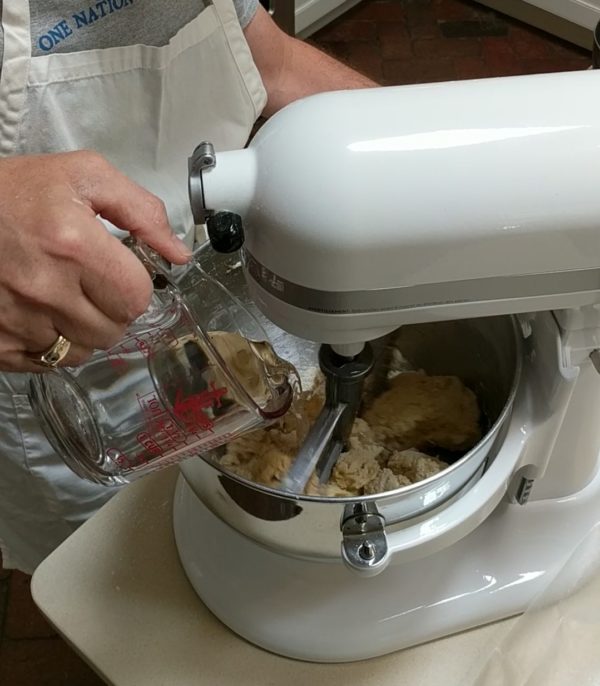
- Remove the dough from the mixer and roll into a log. Cover with a kitchen towel and allow to rest for 15 to 30 minutes before rolling out.
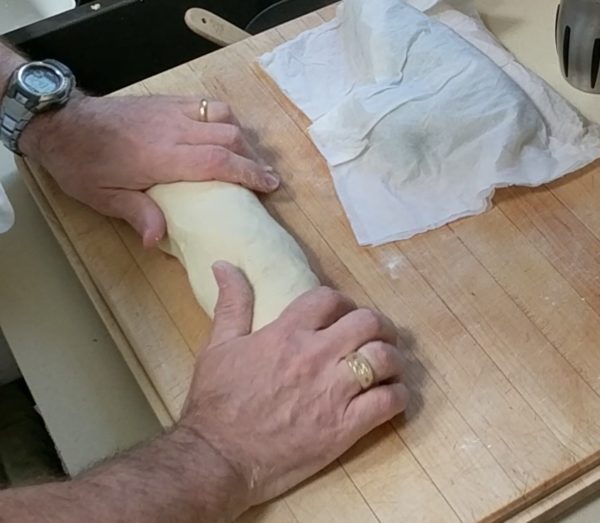
- Set up your pasta machine, either a hand crank version or an attachment for your mixer.
- Cut off a small handful of dough.
- Flatten the dough, dust with flour, and run it through the pasta machine on the thickest setting.
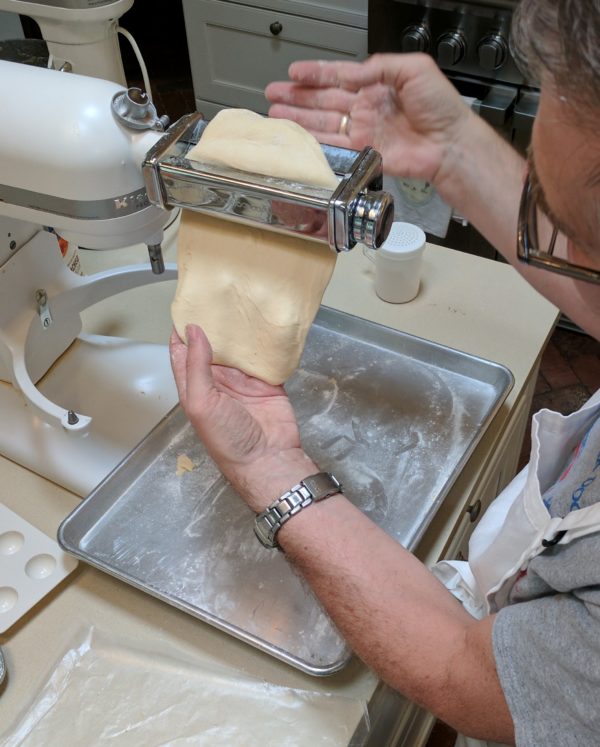
- If the dough is catching on the rollers it may be too wet. Sprinkle liberally with flour.
- Run the dough through the same setting one more time.
- Run the dough through the pasta machine narrowing the setting by one notch each time. If the dough is getting too long to cover much more than two lengths of the ravioli mold, cut off the excess and continue.
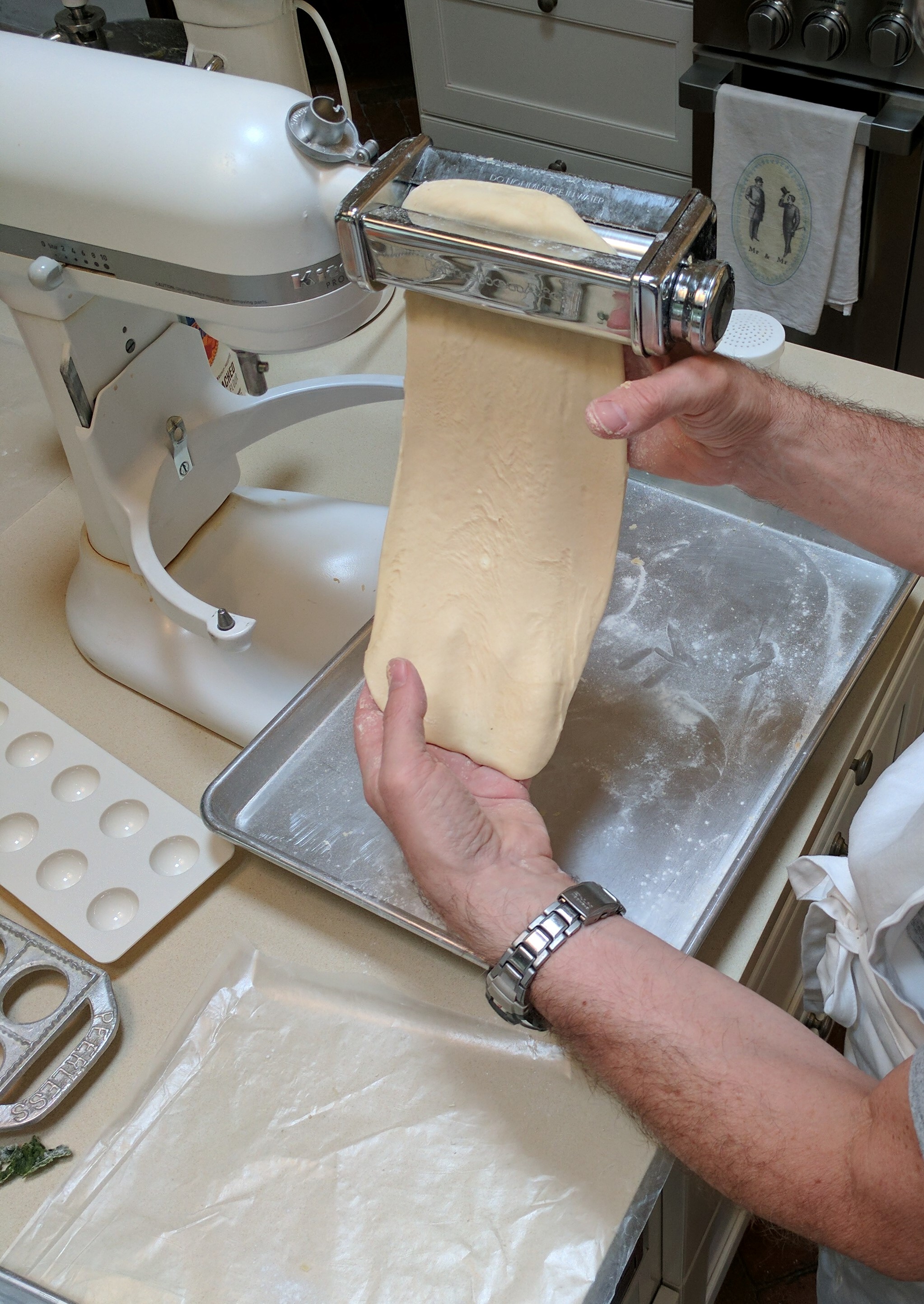
- When rolling out the dough, use slow, even motion. If the dough is not rolling out to the full width of the machine, or at least wide enough to cover the width of the ravioli mold, fold it in half crosswise and run it through the machine again on whatever the last setting was.
- If the dough is not rolling out smoothly, and the issue is not that it is too damp, run the dough through the machine again on the same setting.
- On most pasta machines with five settings for thickness, you will want to stop rolling out the dough on the next-to-thinnest setting.
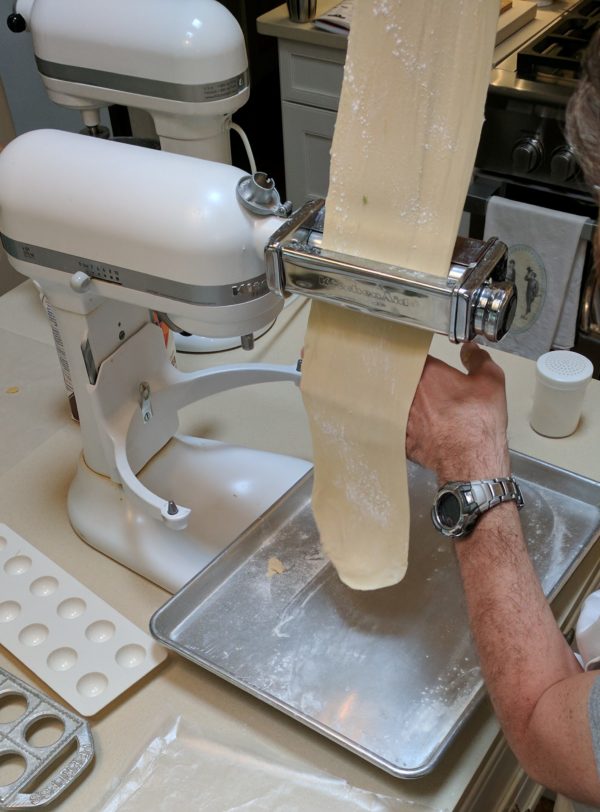
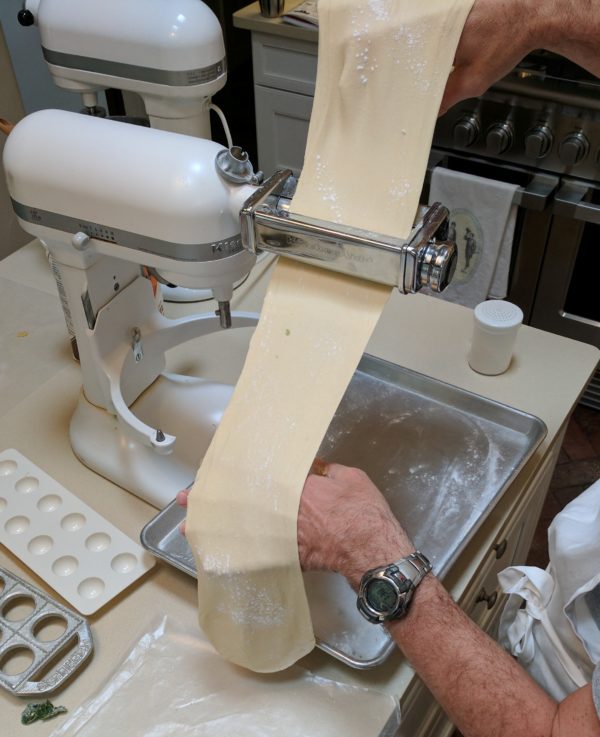
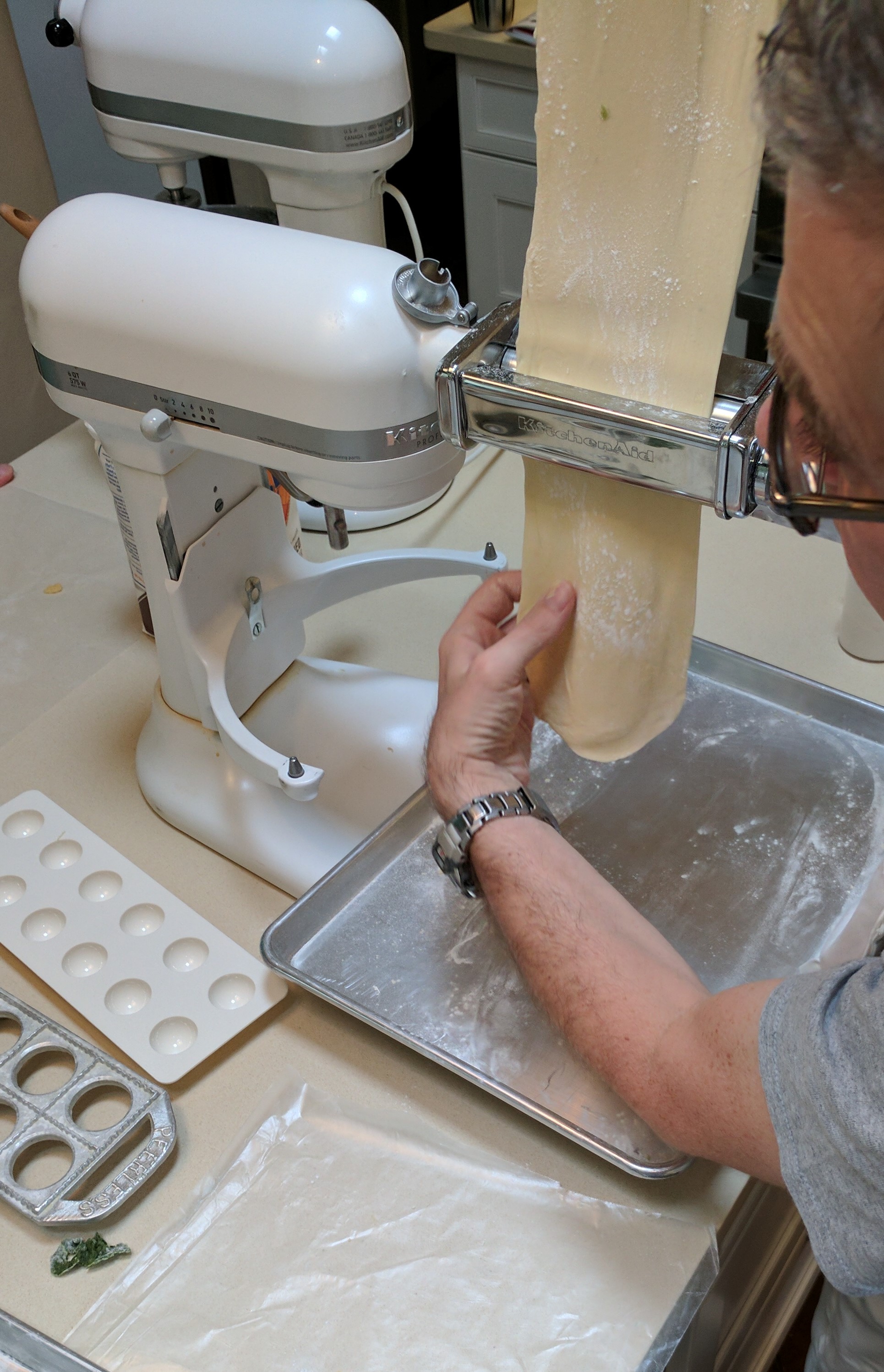
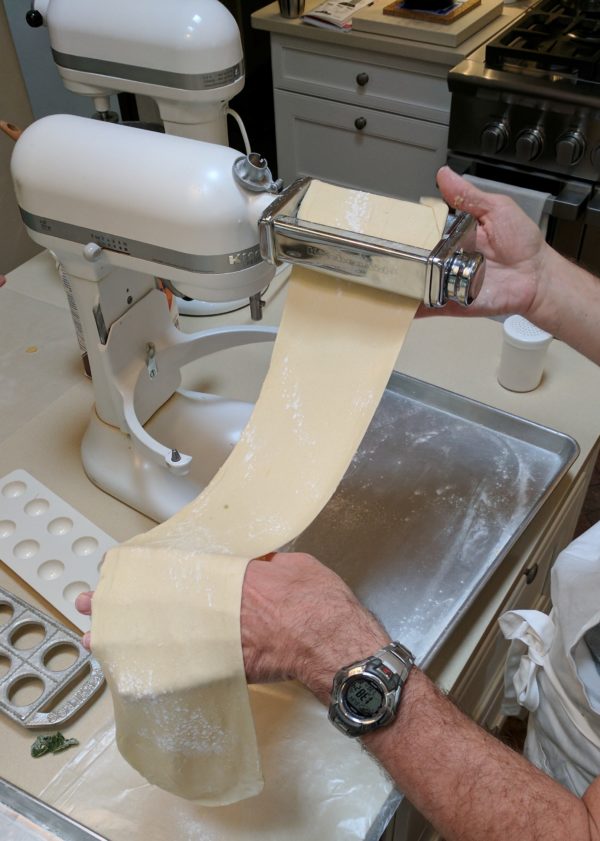
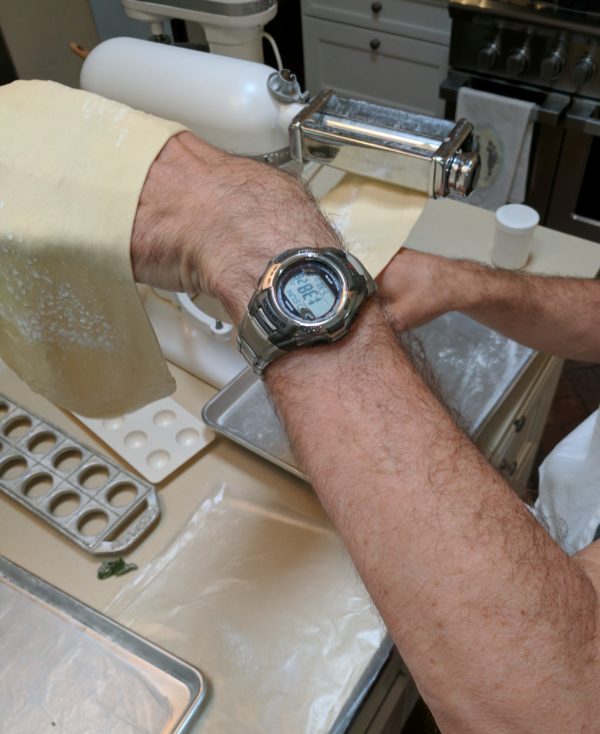
- Put the rolled out dough on a lightly floured surface and cover with a kitchen towel. Repeat with 2 or 3 more portions of dough.
- Allow the remaining dough to rest, covered, while filling and cutting the first batch of ravioli.
- To fill the ravioli, take the rolled out dough and lay it across the ravioli mold.
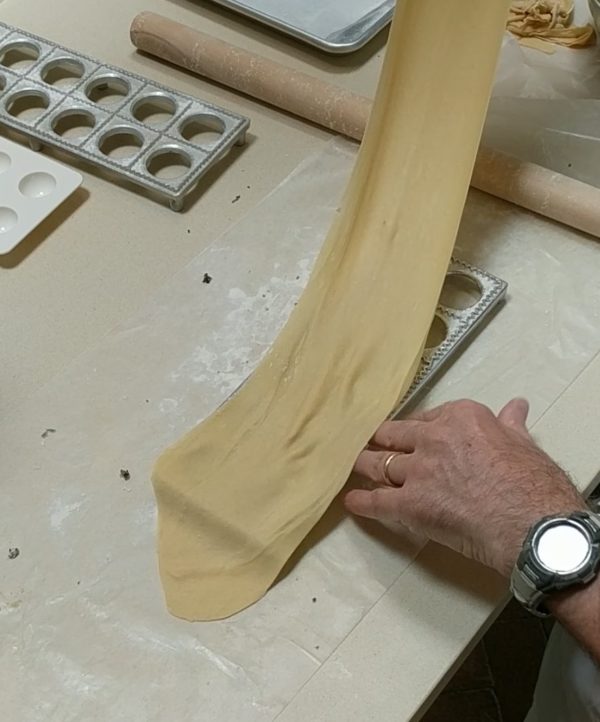
- Add a slightly rounded teaspoonful of filling to each ravioli. Do not overfill or the ravioli may break when being cooked.
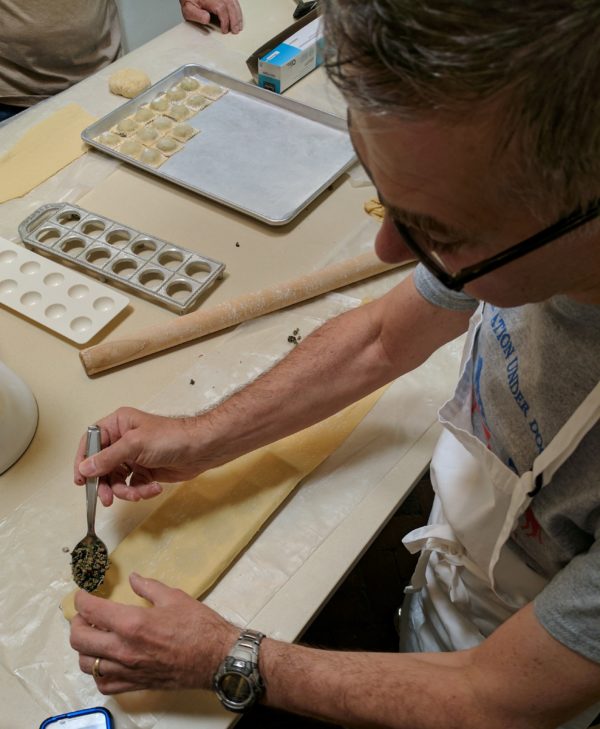
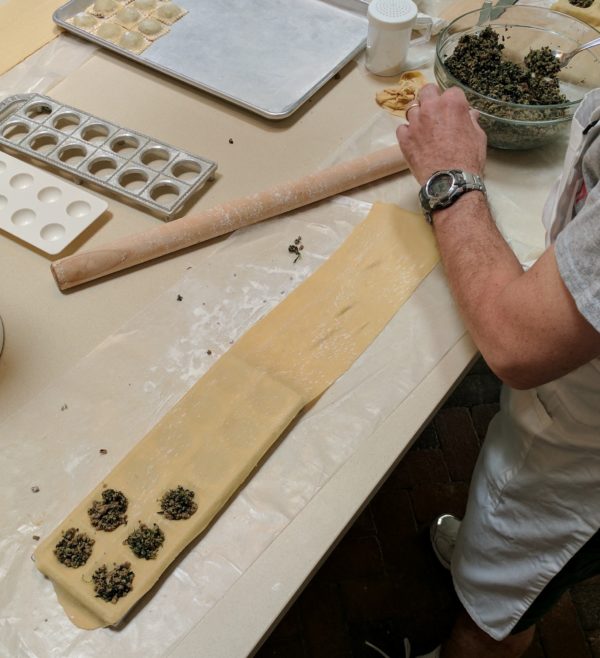
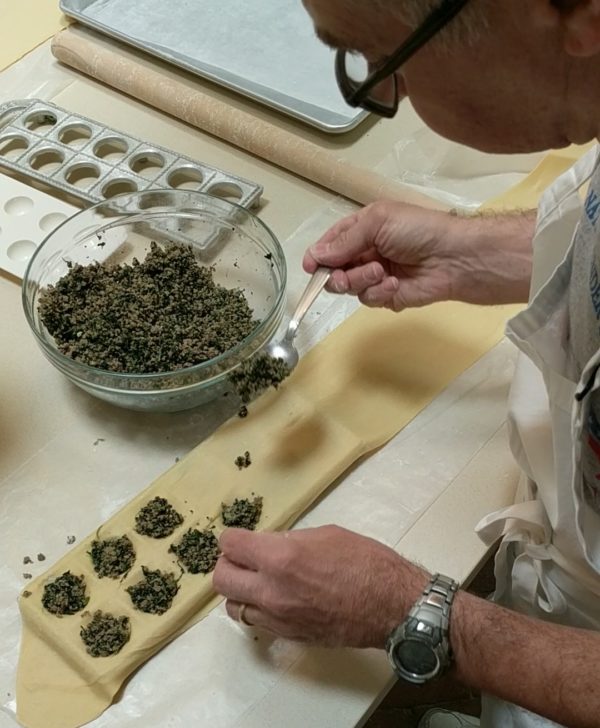
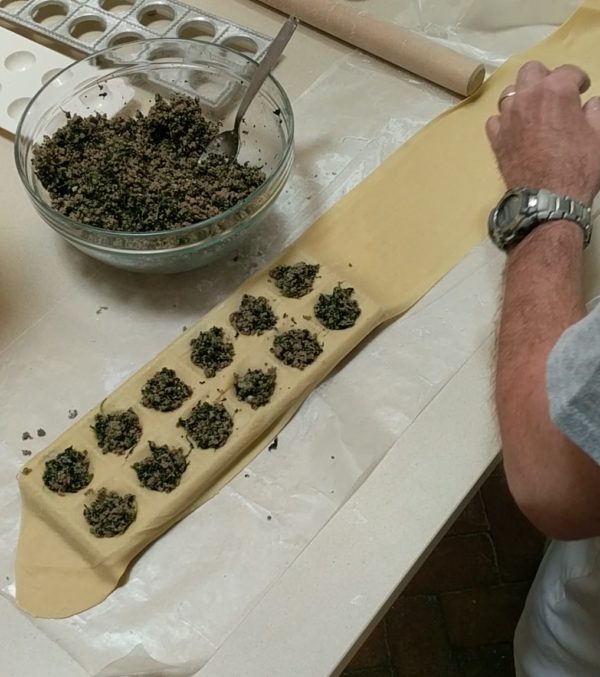
- Fold the dough over the top.
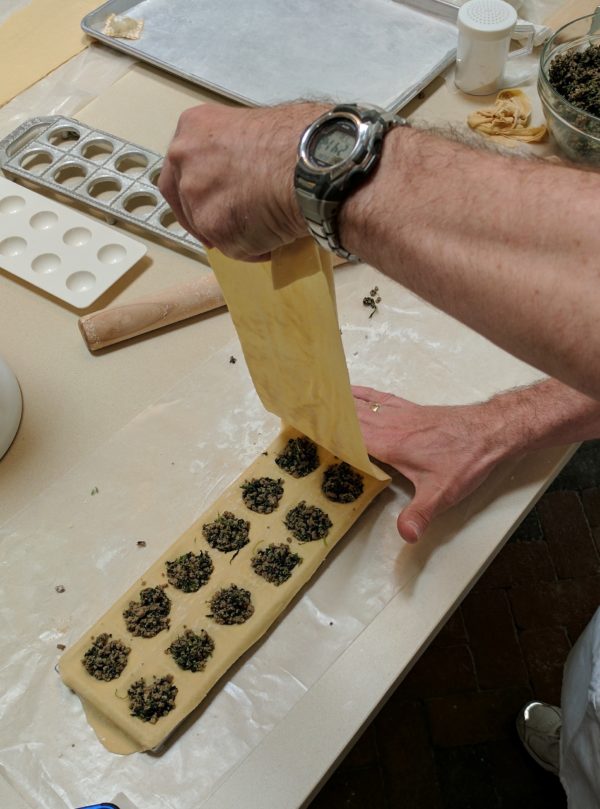
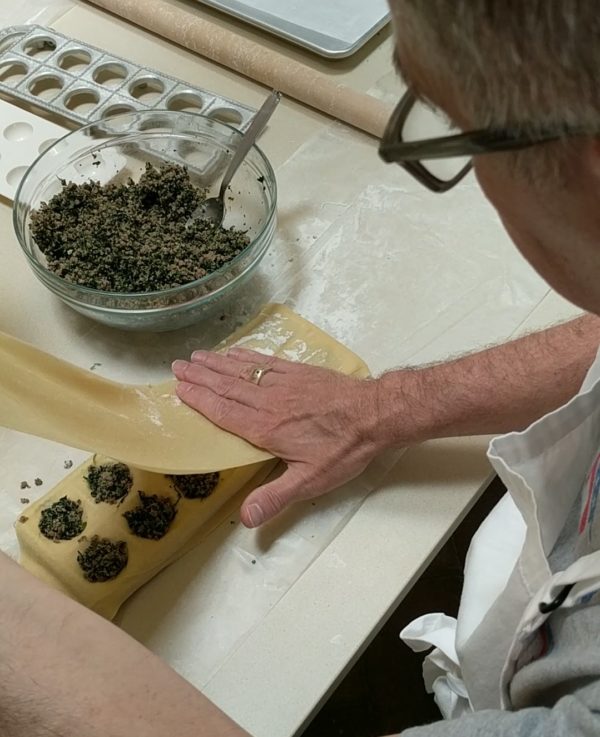
- Lightly pat the top sheet of dough.
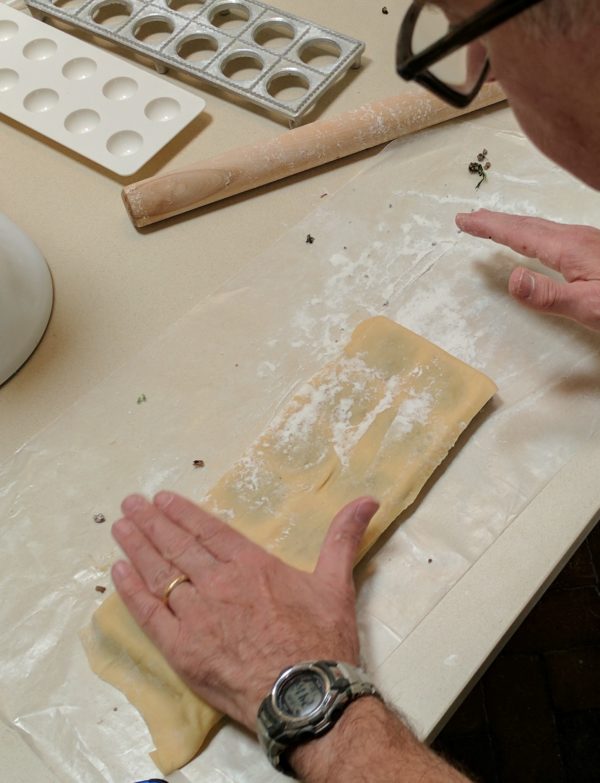
- Using a rolling pin, cut the dough along the zig-zag edges. Be careful to fully cut through the dough around the edges as well as between each raviolo.
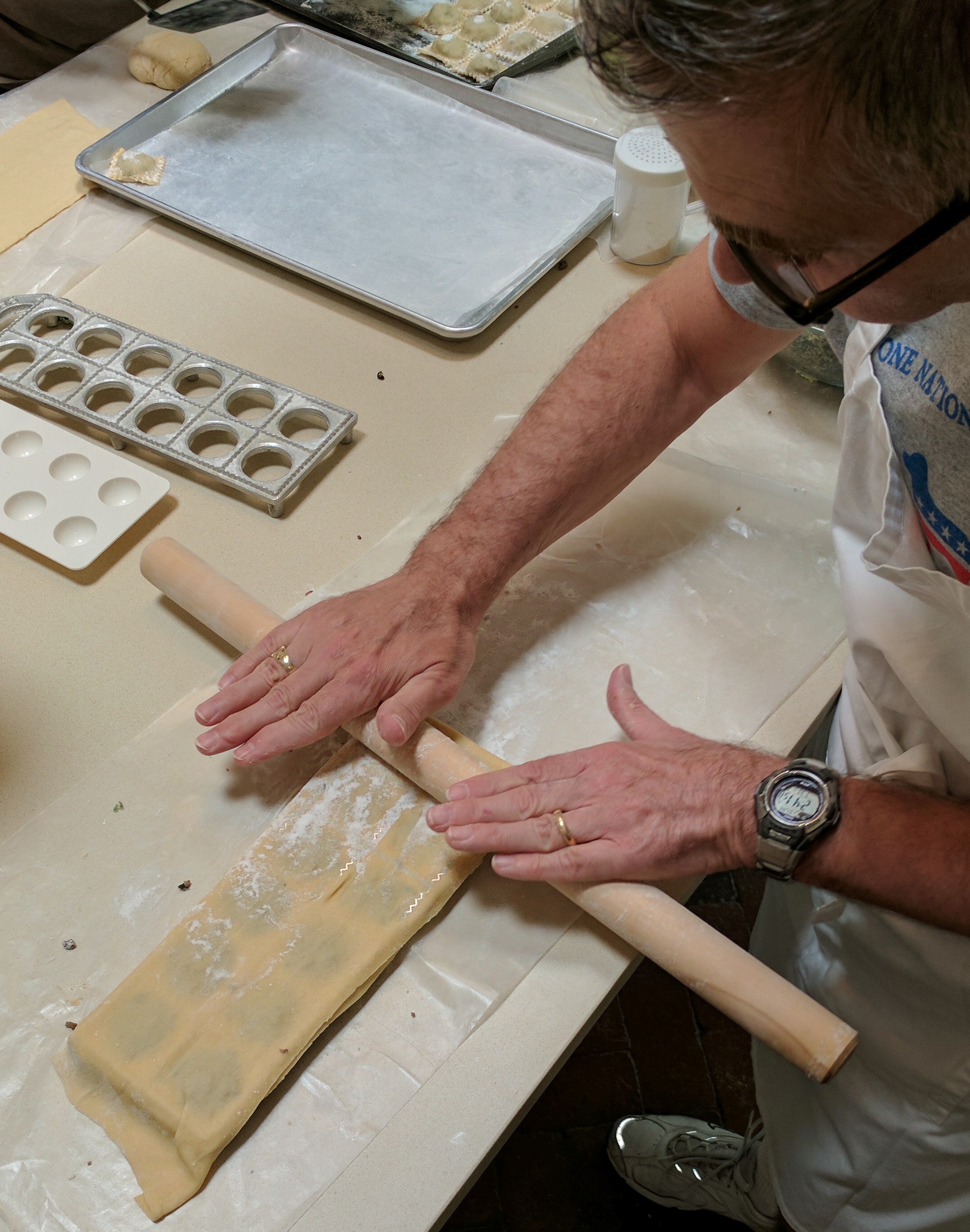
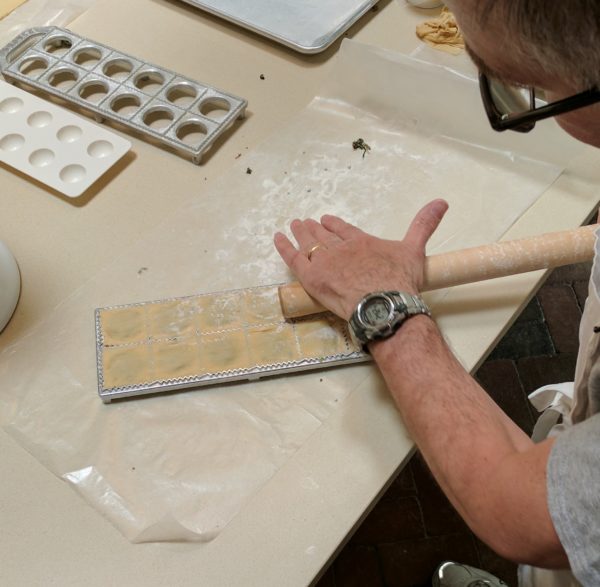
- Remove the ravioli and place on a lightly floured surface. Cover lightly with a kitchen towel.
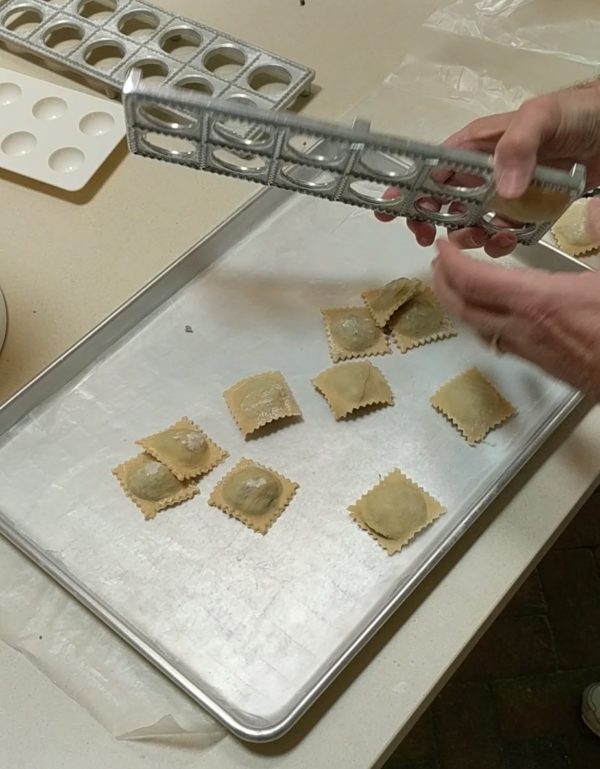
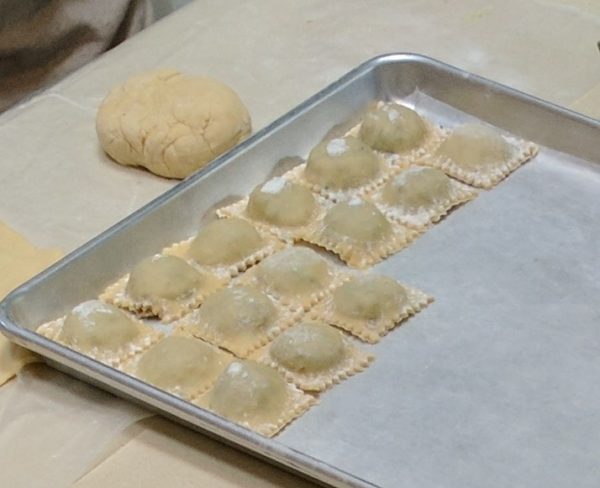
- Repeat with the remaining dough and filling.
- Cook, refrigerate, or freeze the ravioli.
Copyright © 2017 by VillaSentieri.com. All rights reserved.

